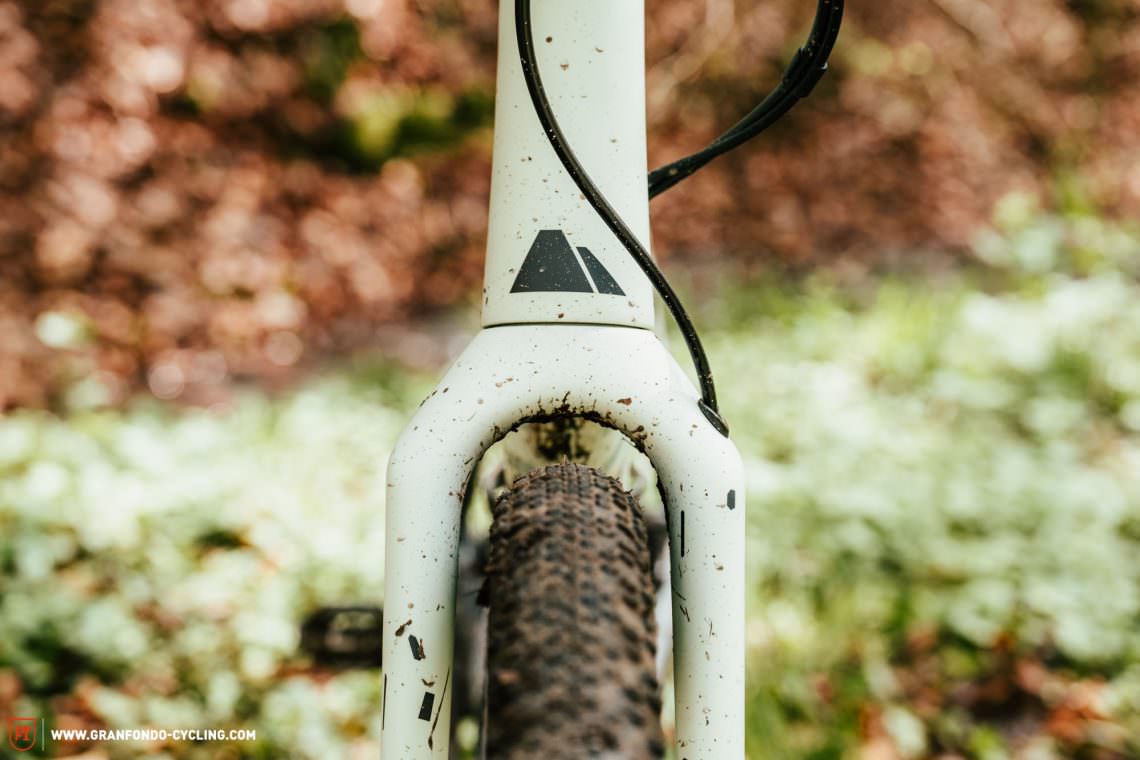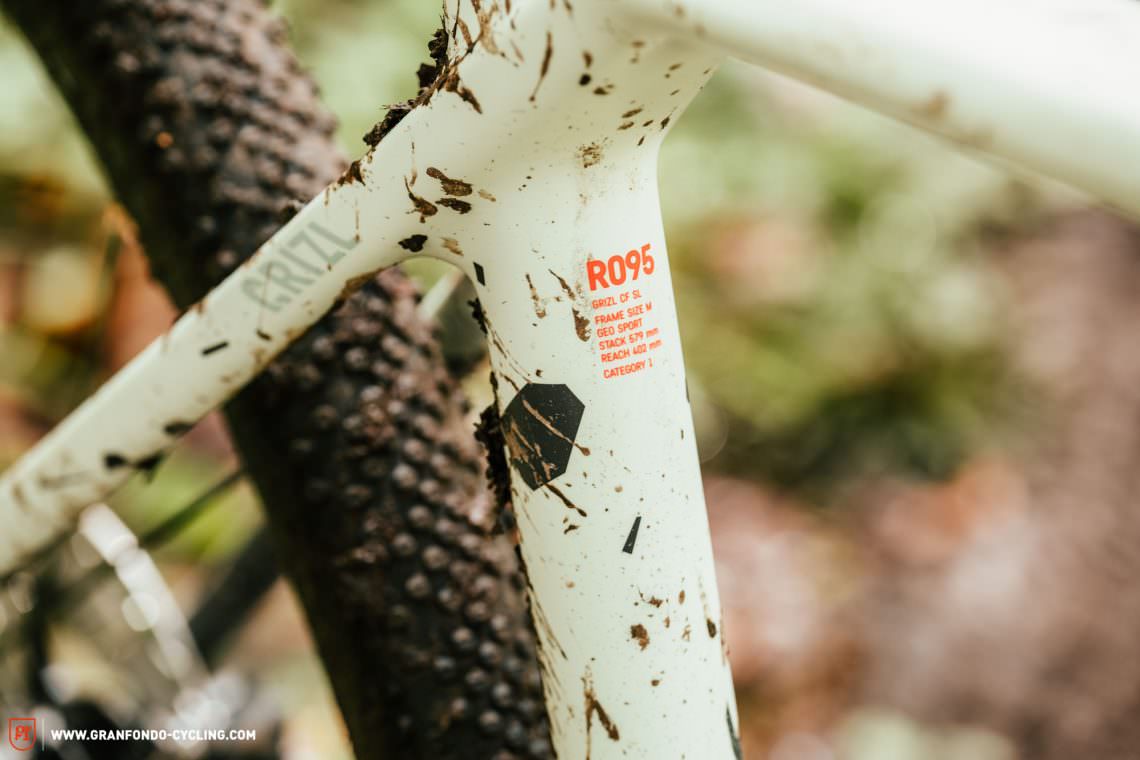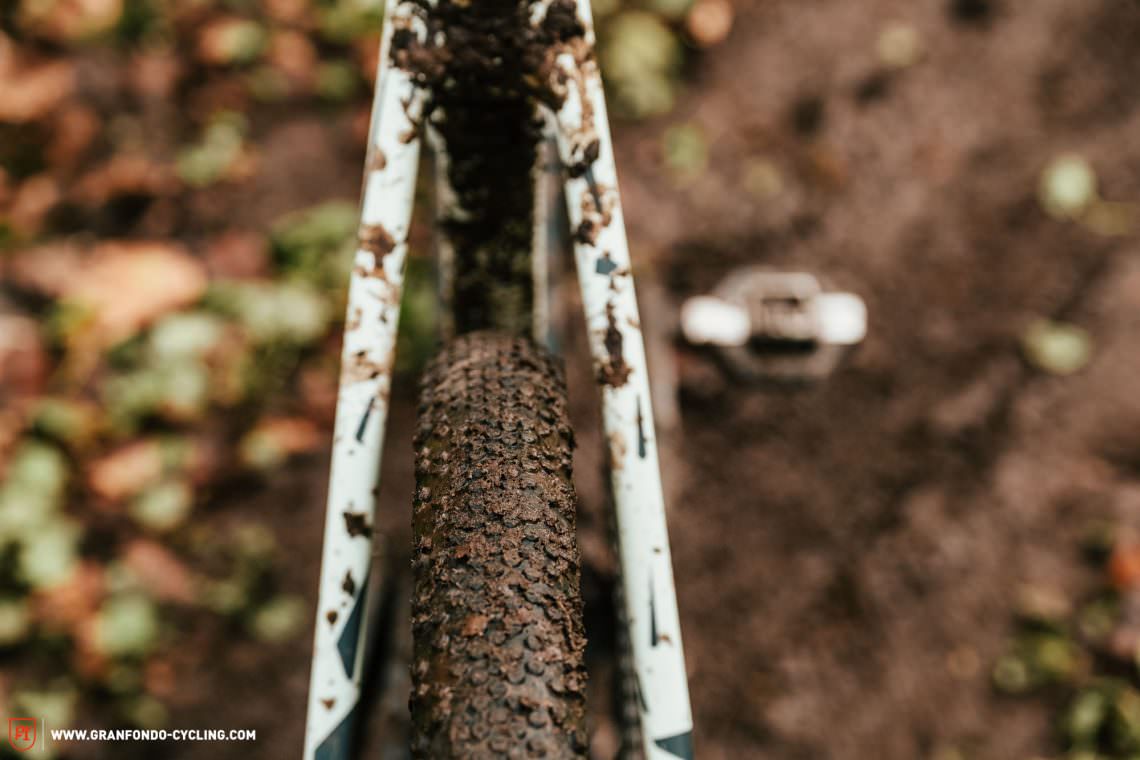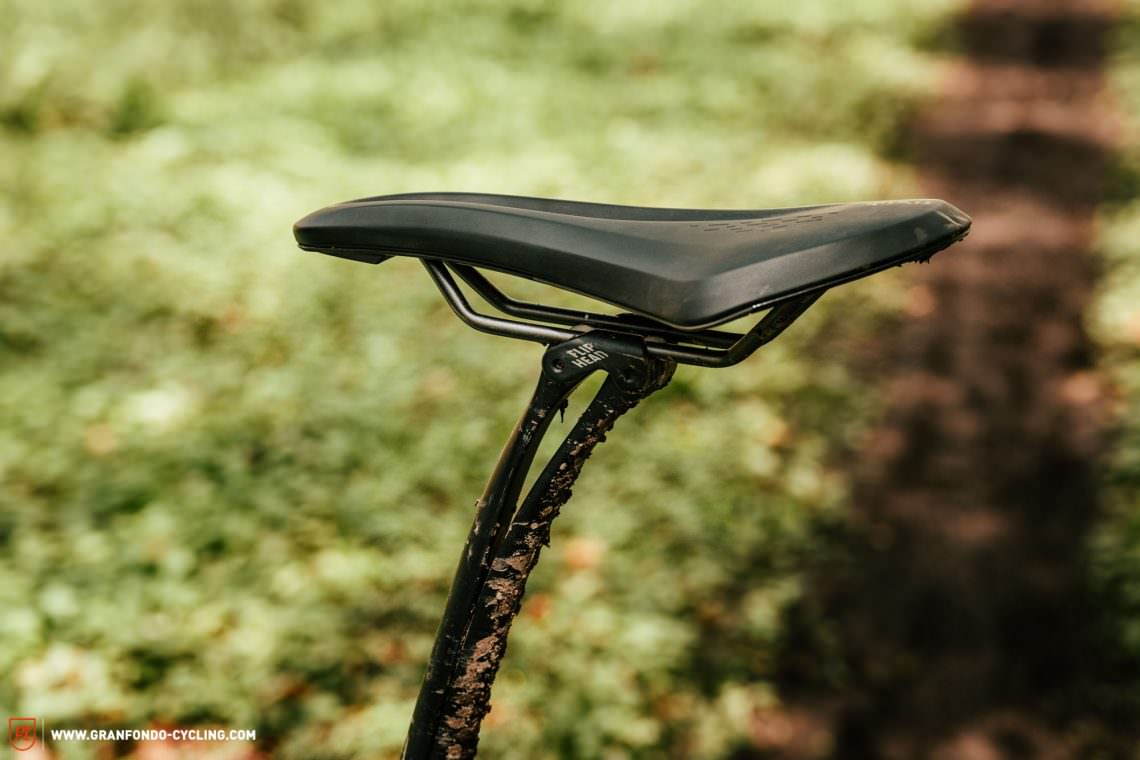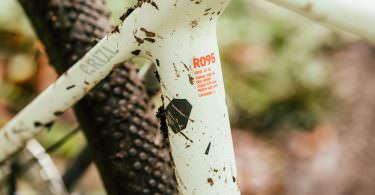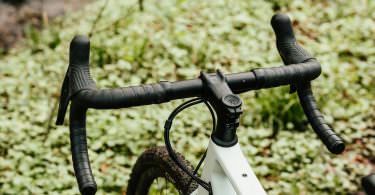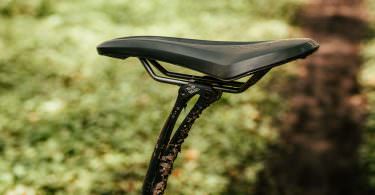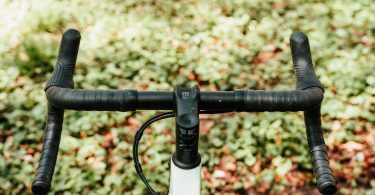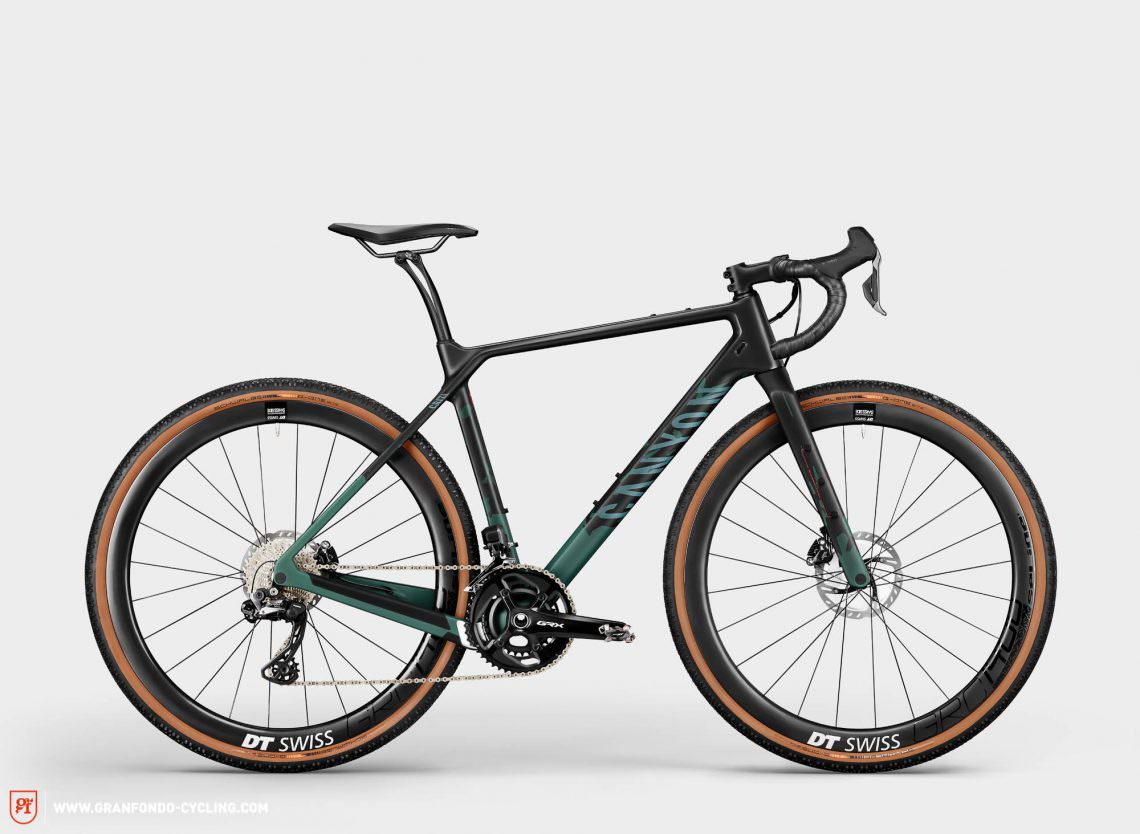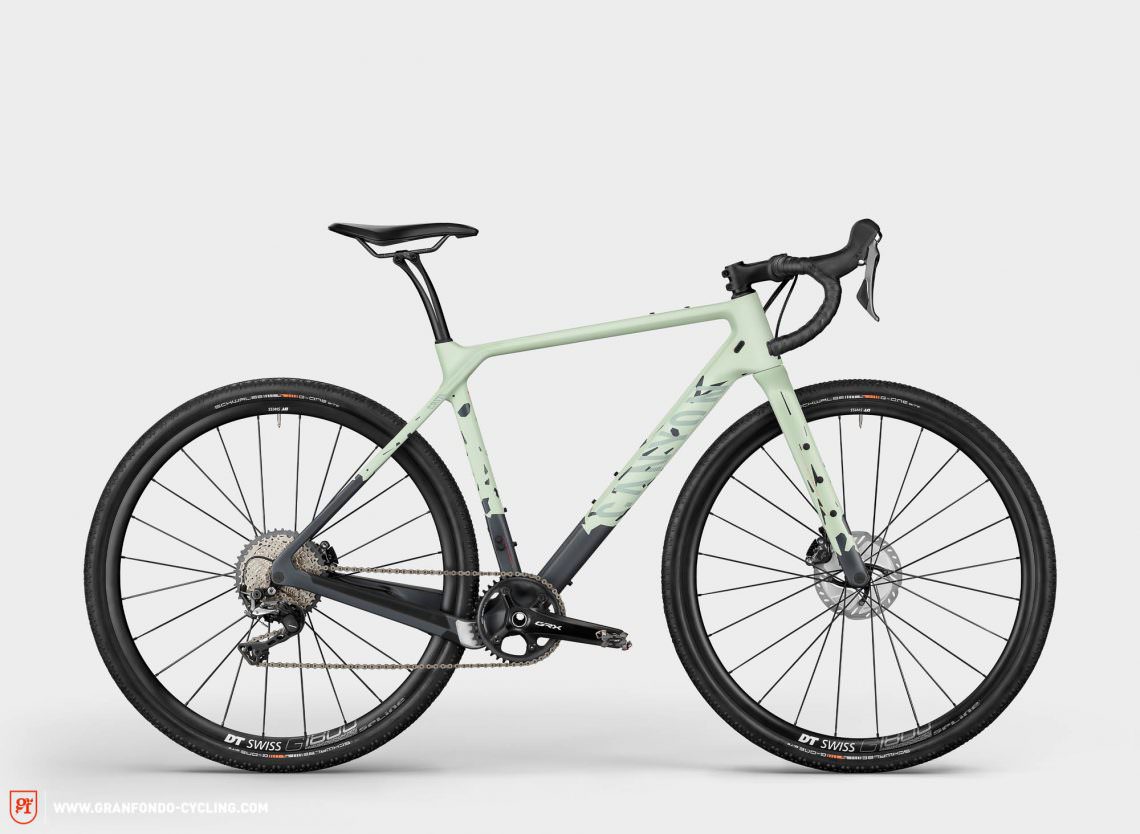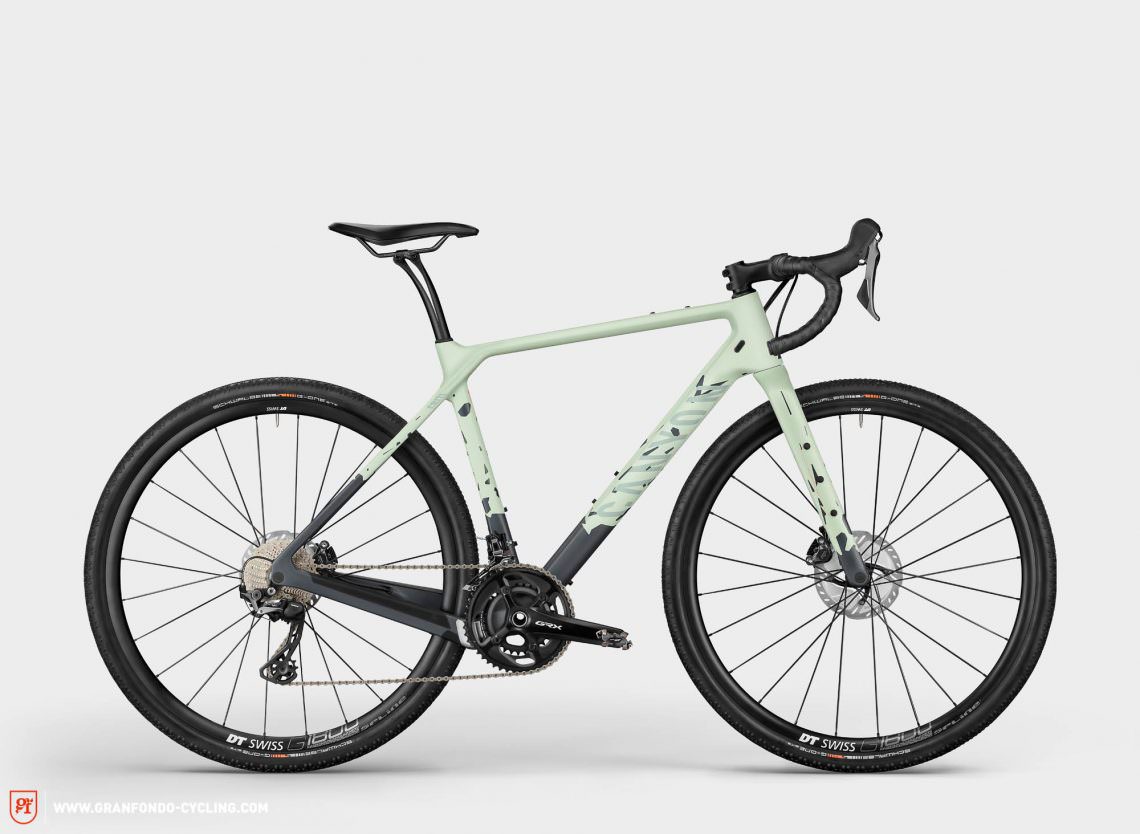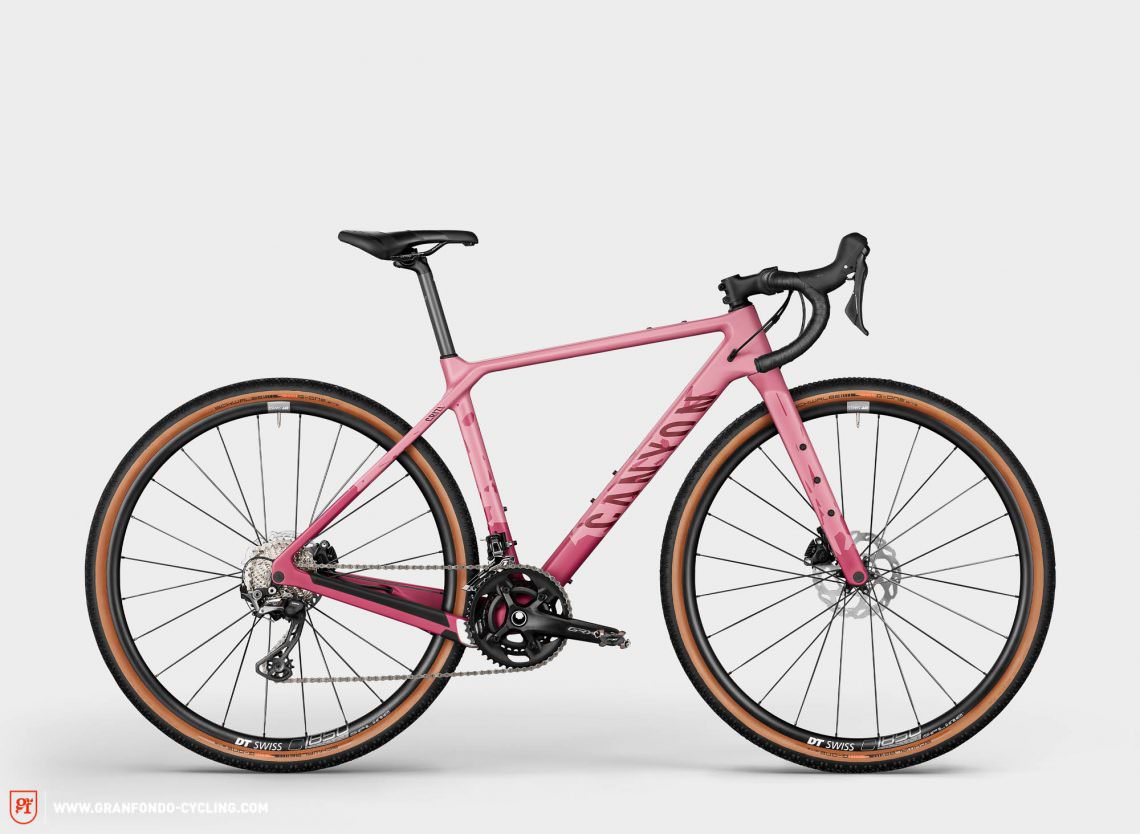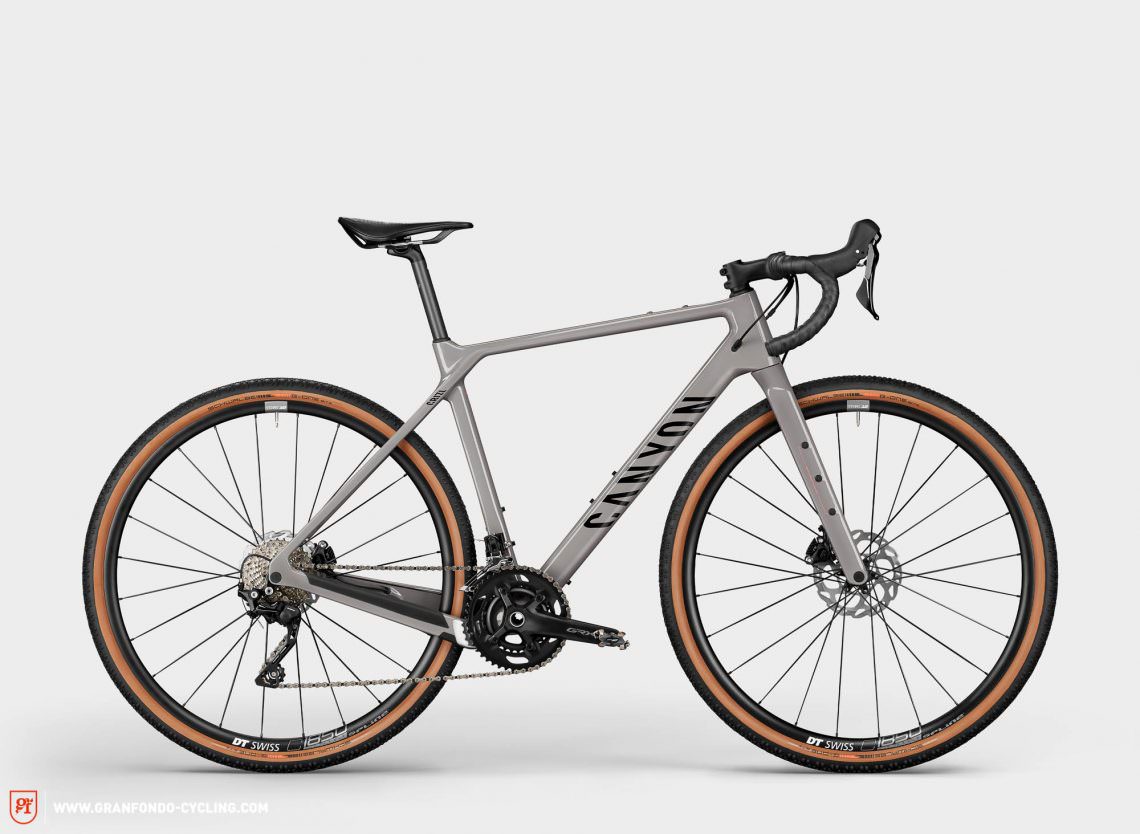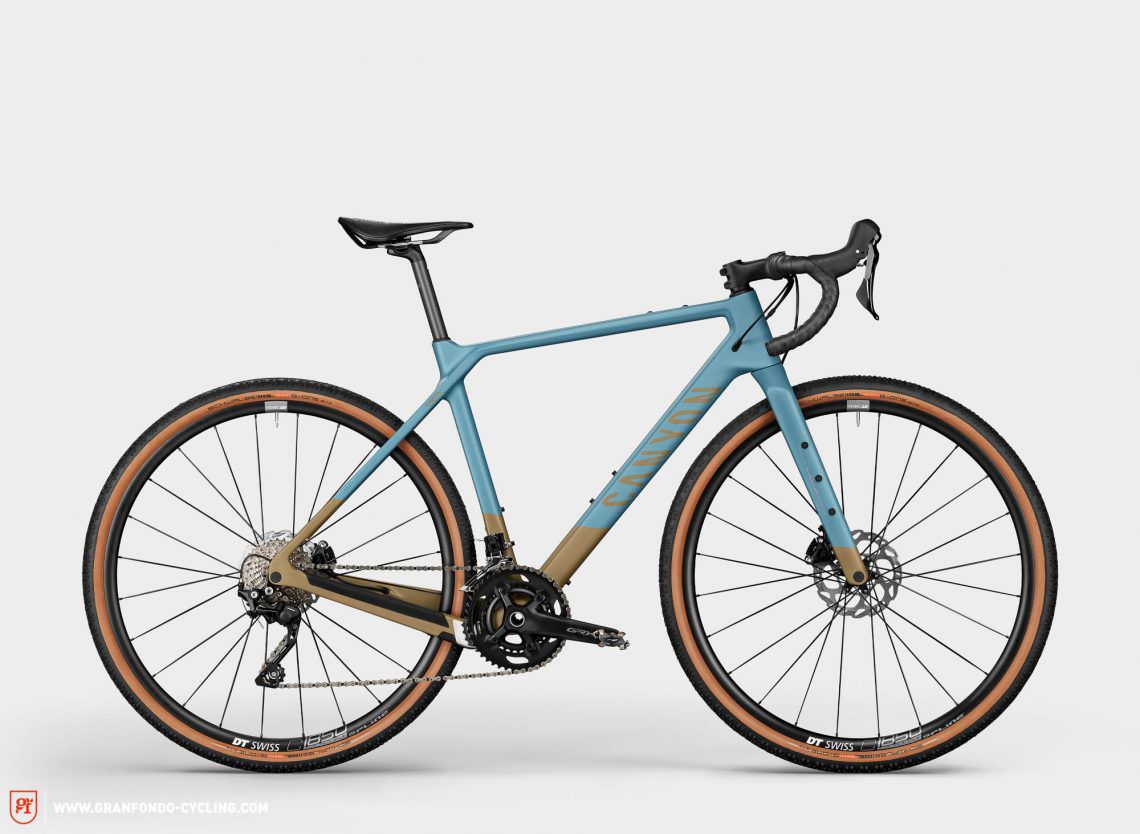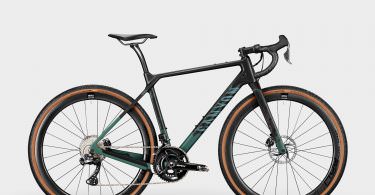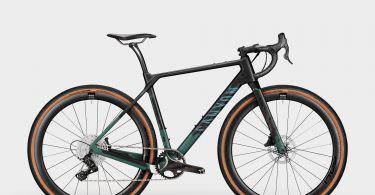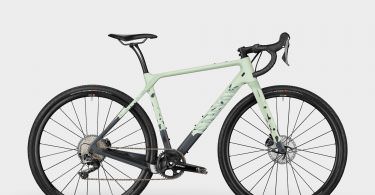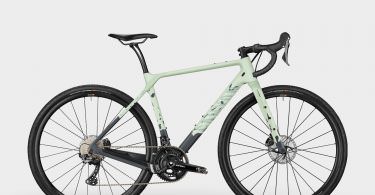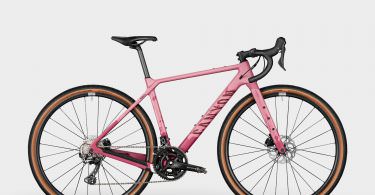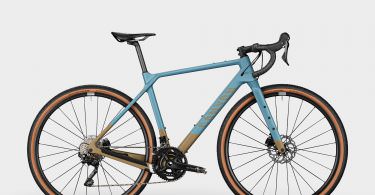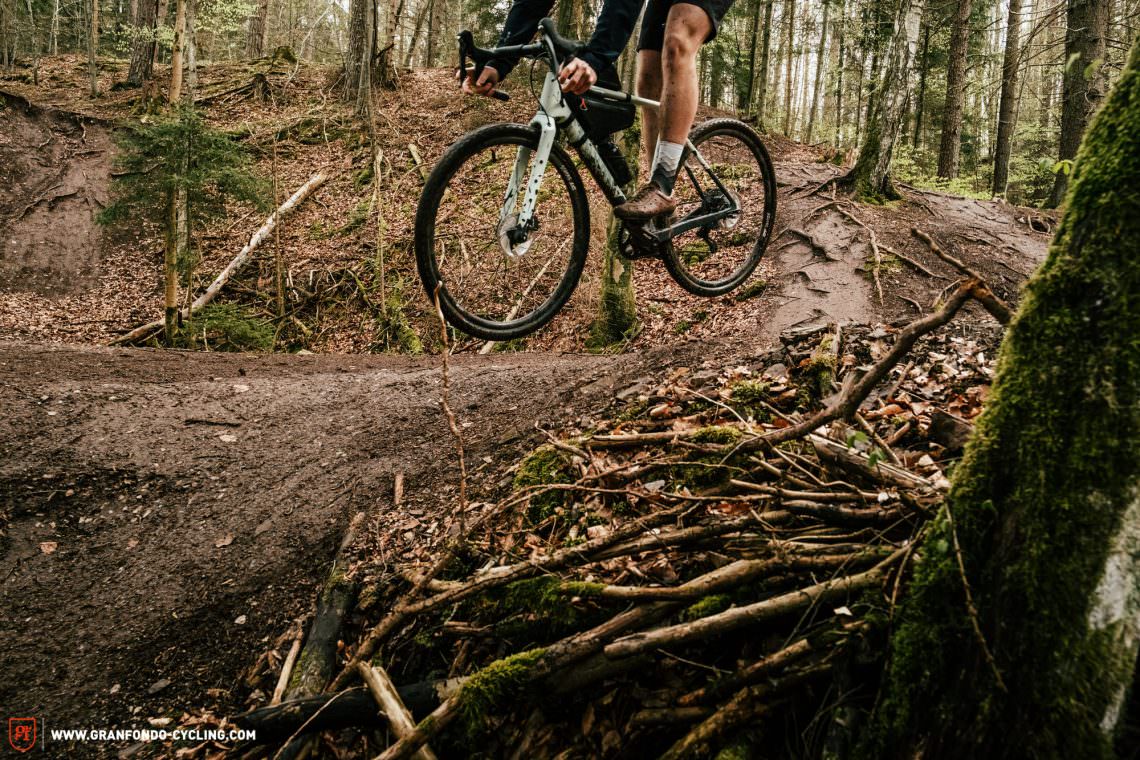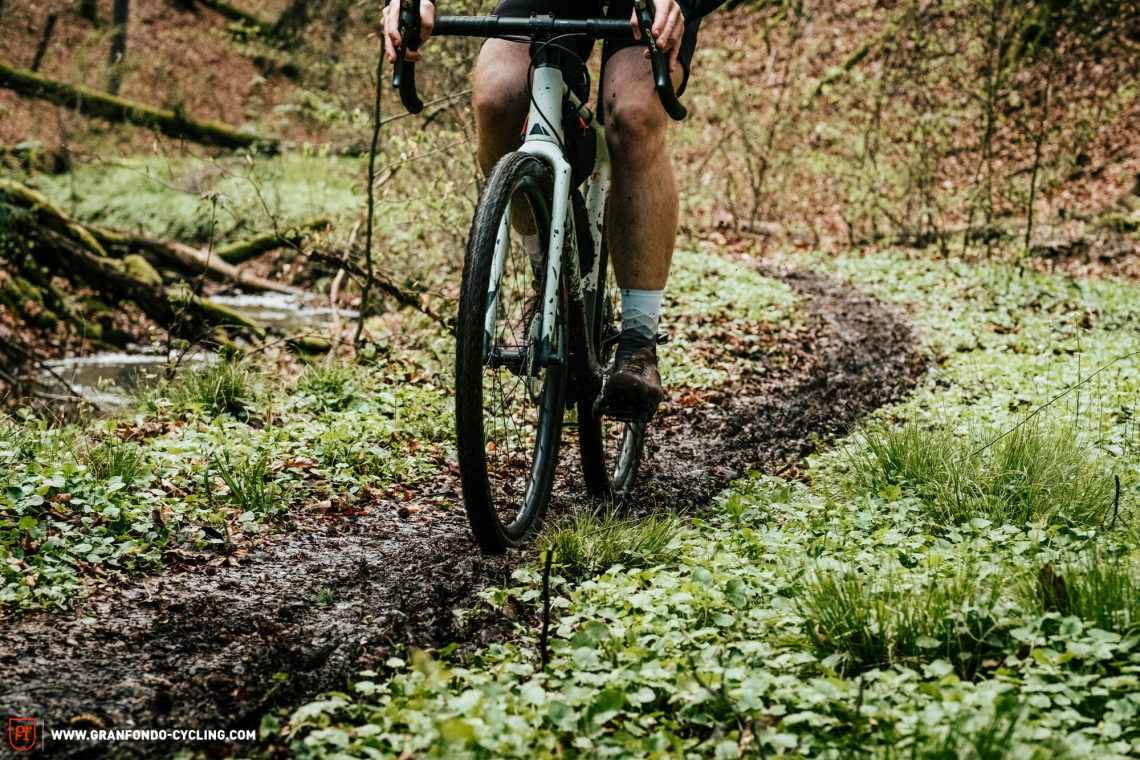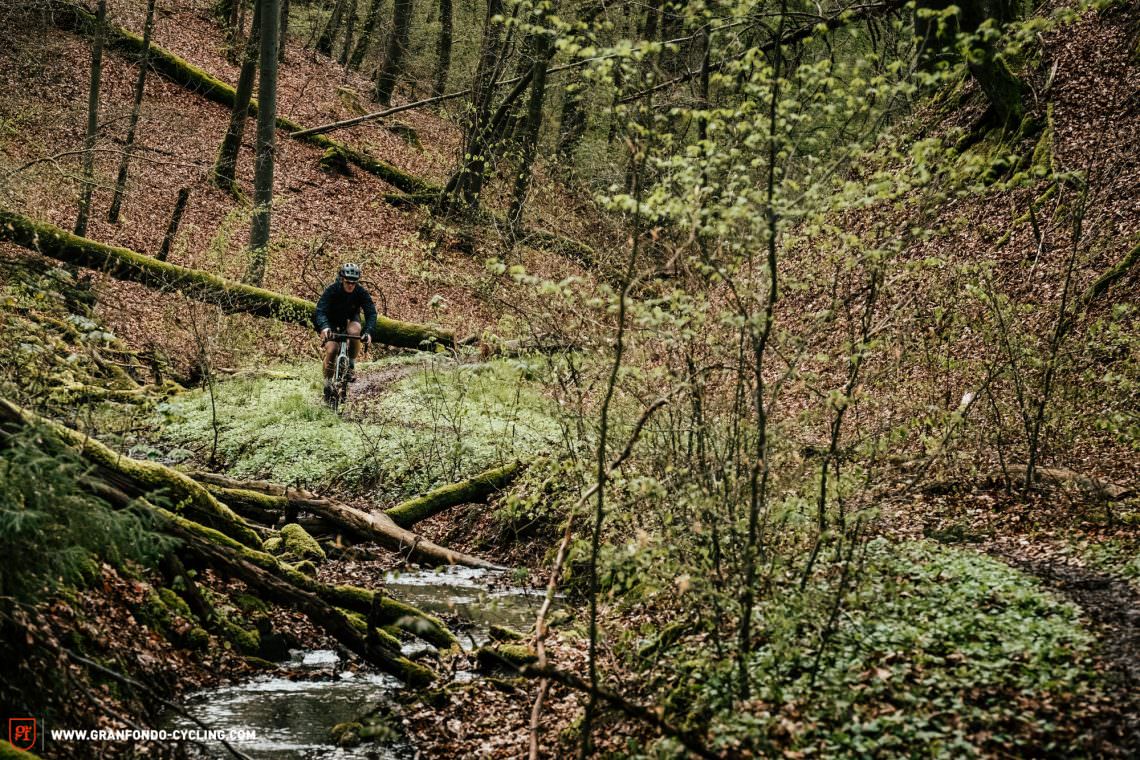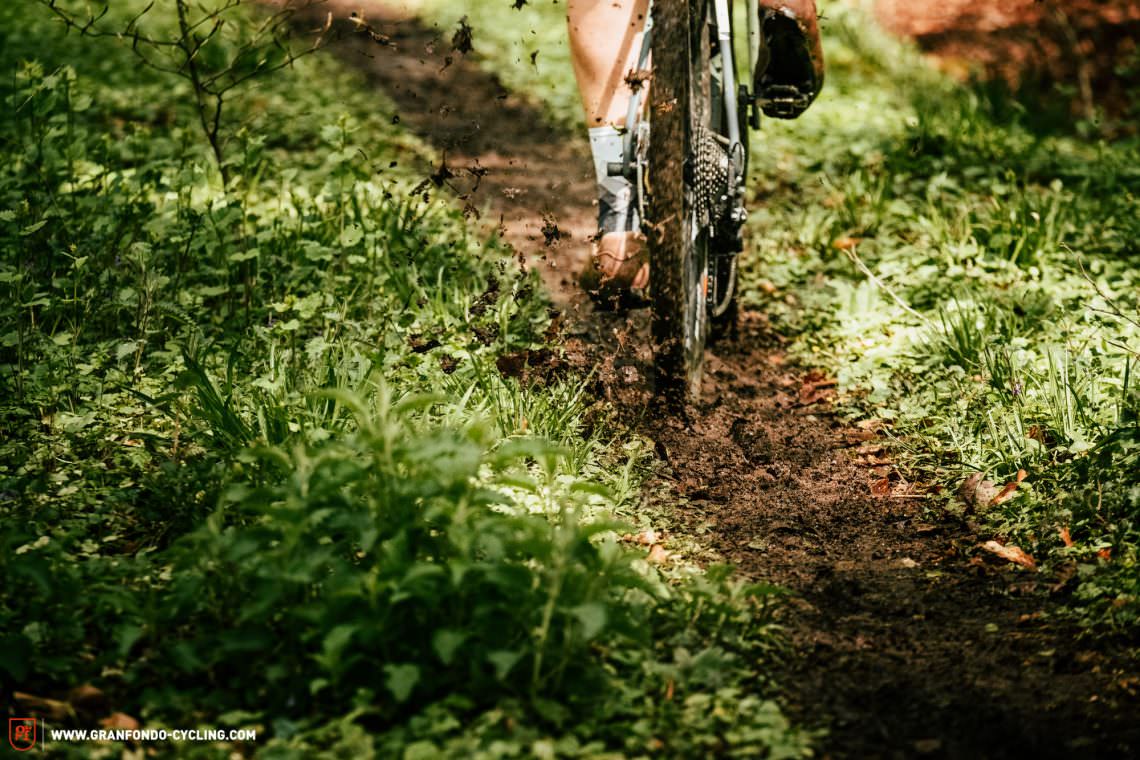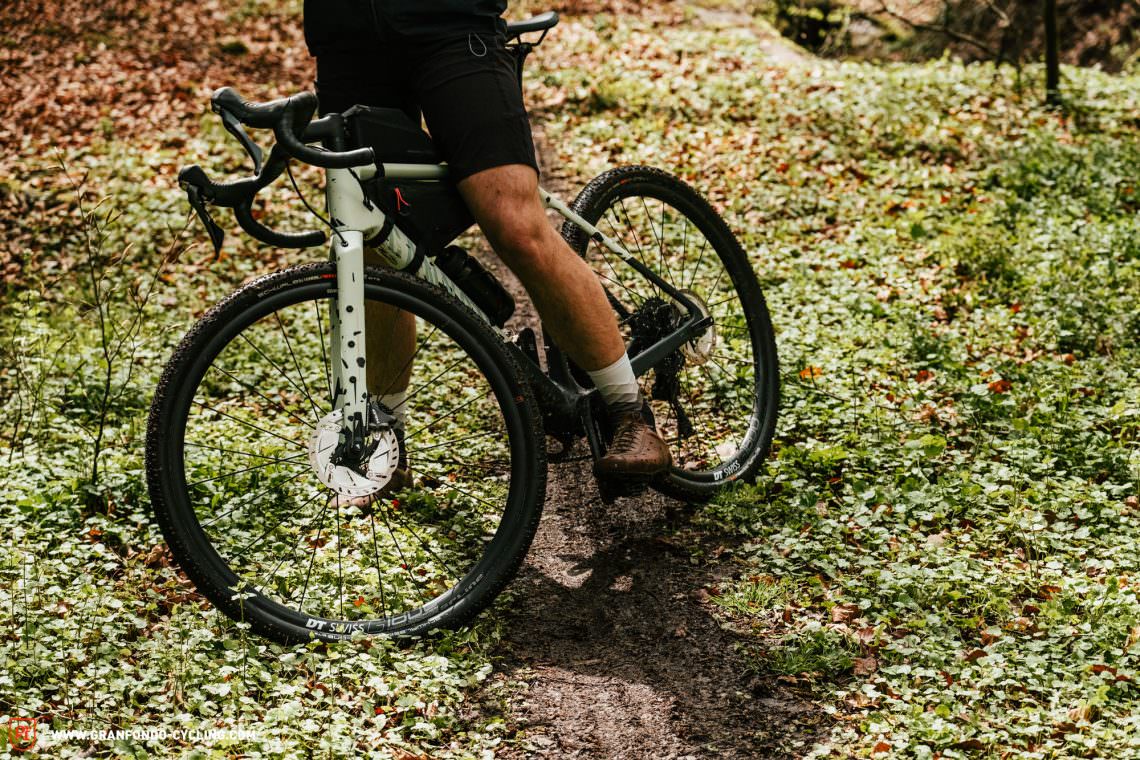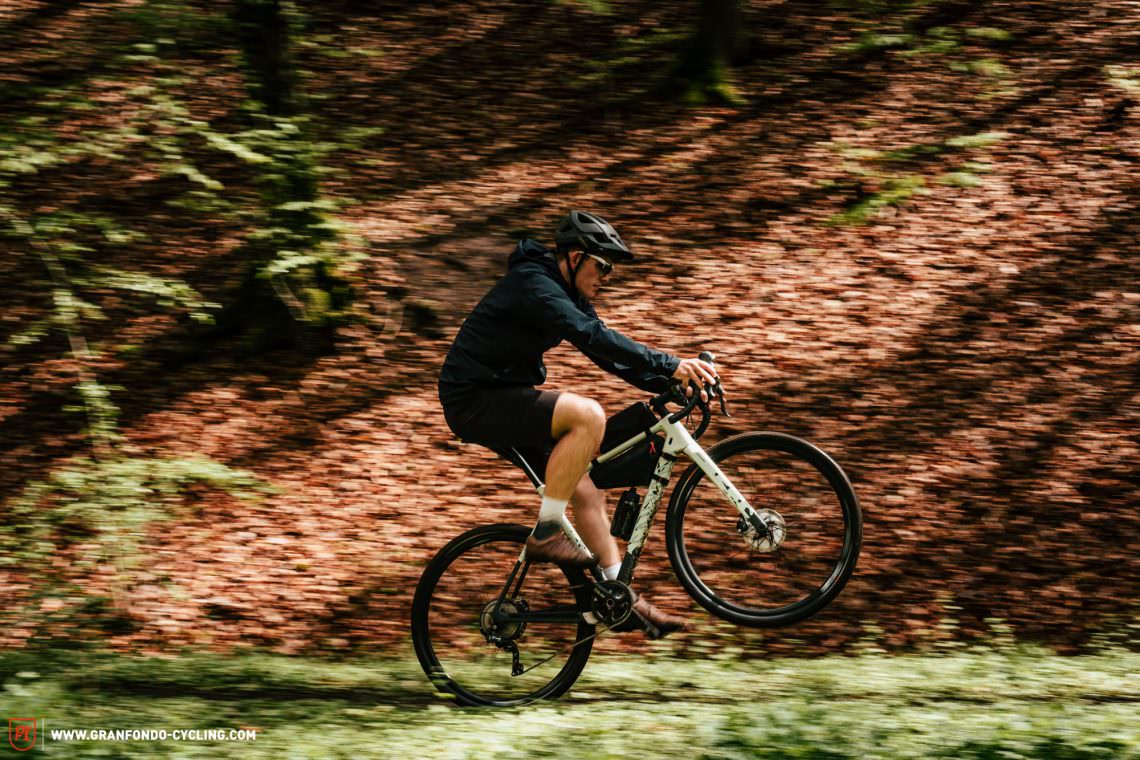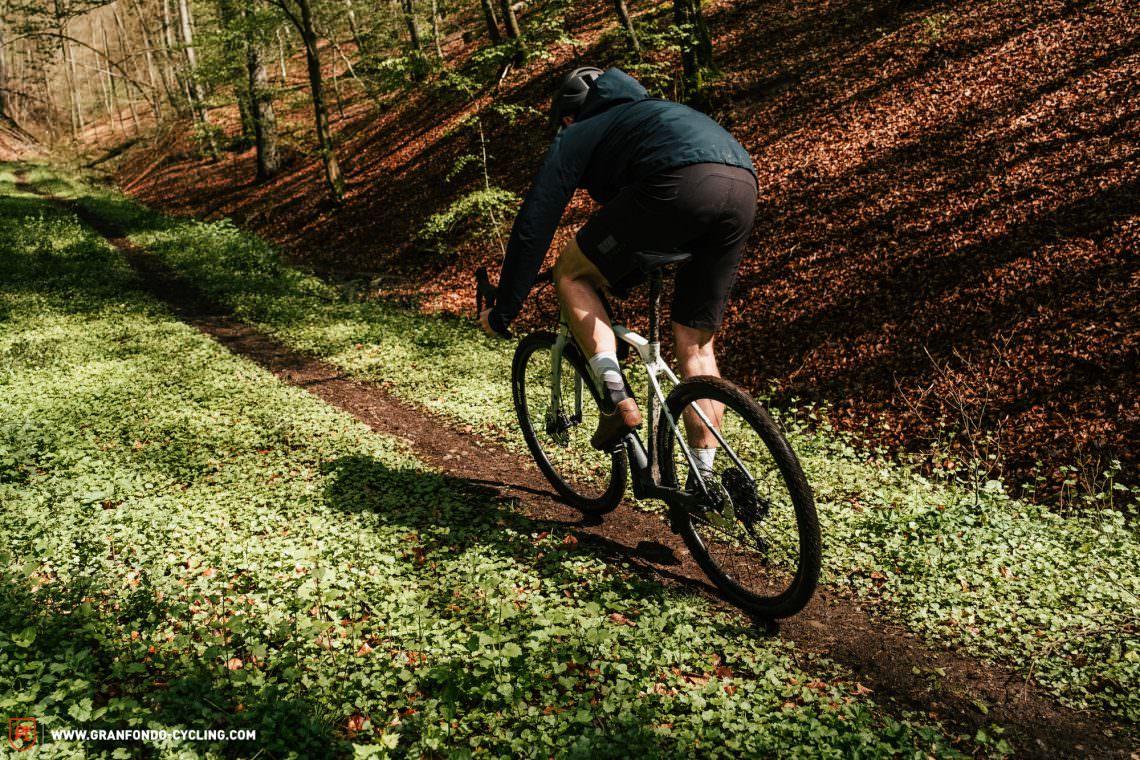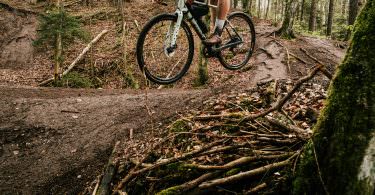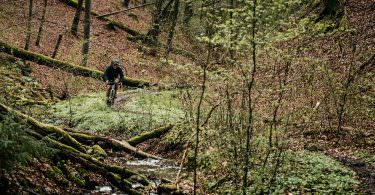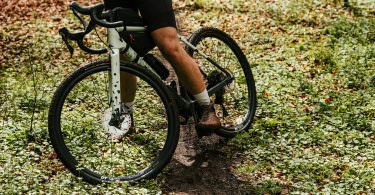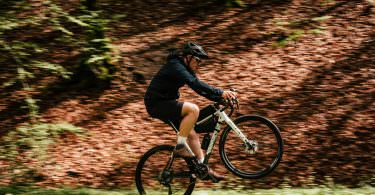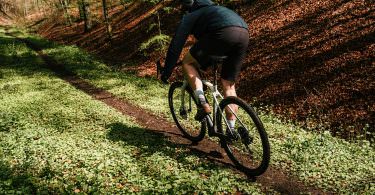Maximum performance in demanding terrain and versatility for gravel adventures off the beaten track, that is what Canyon promise with the Grizl CF SL and SLX gravel bikes, featuring 50 mm tire clearance and lots of mounting points. Can it deliver? The Canyon Grizl CF SL 8 1BY in review!
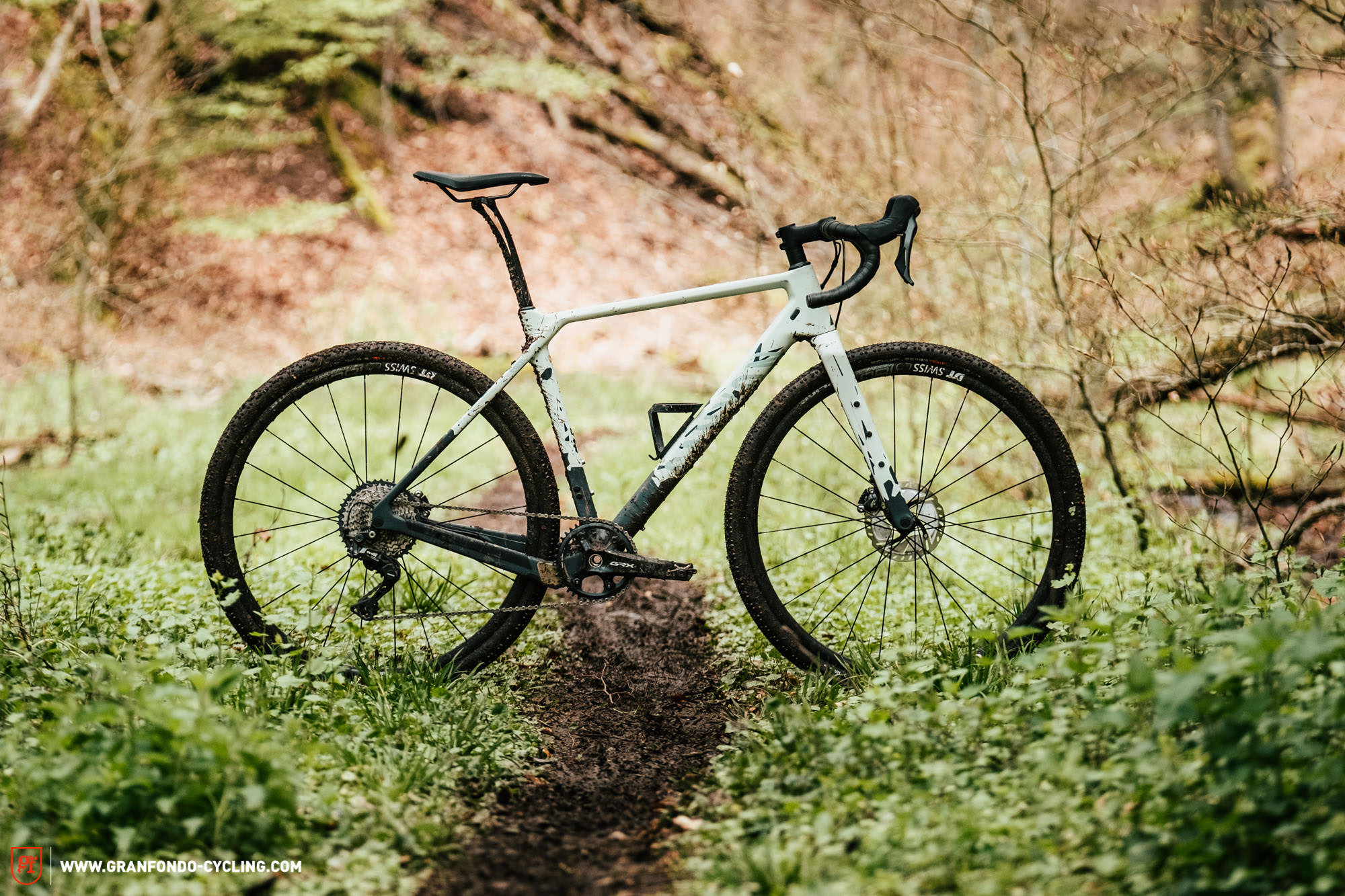
Gravel is what you make of it! It’s a type of cycling that is not yet subject to UCI regulations. Although they can’t deny their relationship to cyclocross bikes, gravel bike development isn’t restricted regarding geometry and tire clearance, giving designers free reign. As such, the gravel bike market has developed into one of the most diverse in the bike scene over the past few years, from all-road bikes to bikepacking pack mules to bikes that could almost pass as mountain bikes. Along with the bikes, gravel riders themselves are just as colourful a bunch.
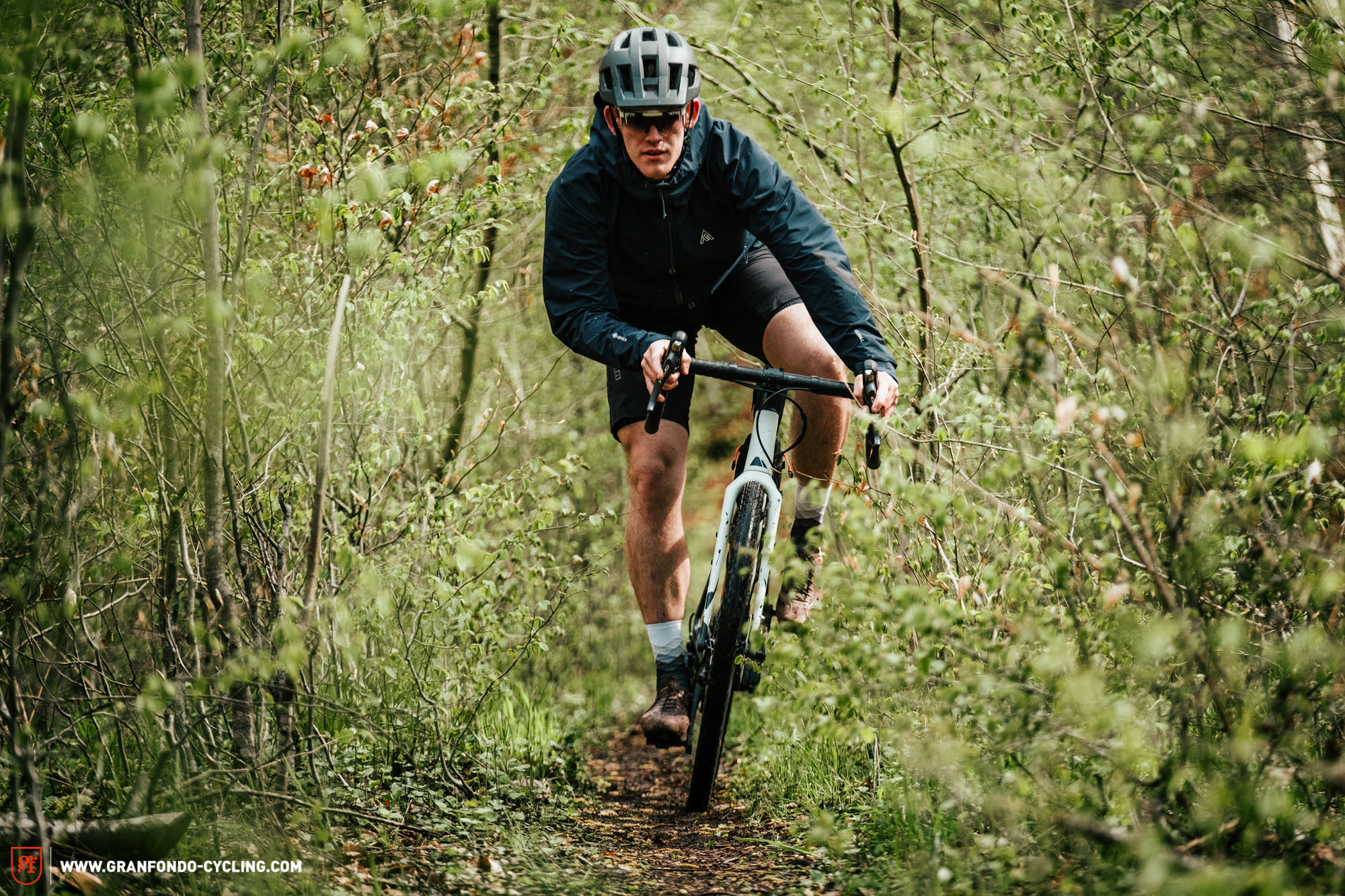
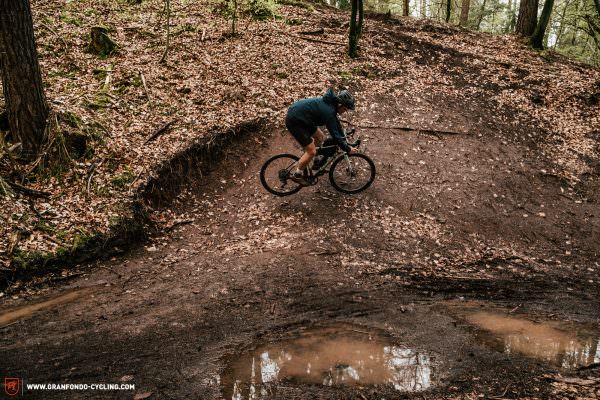
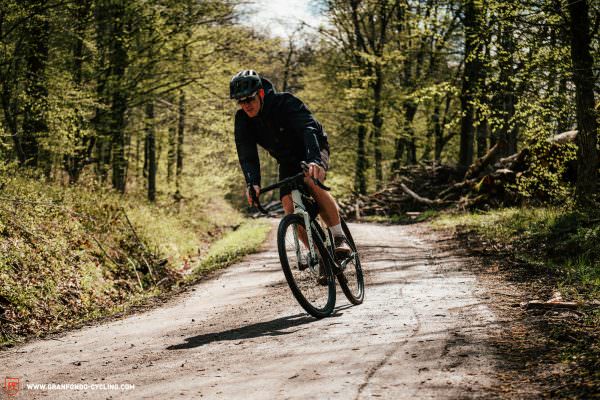
Gravel isn’t defined by the industry, but by you and your idea of how and where you want to ride today. There are bikes that are more or less suited to this riding style, and though we’ve seen them become increasingly versatile, riders’ ideas about gravel have diverged too far to cater to them all with a single bike without compromising it in more than one way
Taking this into account, Canyon expand their gravel portfolio by introducing the Grizl, allowing you to make of gravel what you want. The well-known Canyon Grail CF, which you’ll find in our current gravel bike group test, covers the middle of the spectrum to bridge the gap between efficiency on asphalt and off-road capability. Joining it is the Grizl, with which Canyon aim to deliver the perfect tool for gravel fans who feel most comfortable in rough terrain. With its functional and robust design, the bike is said to be the ideal choice for bikepacking adventures, races or quick after-work rides on any terrain.
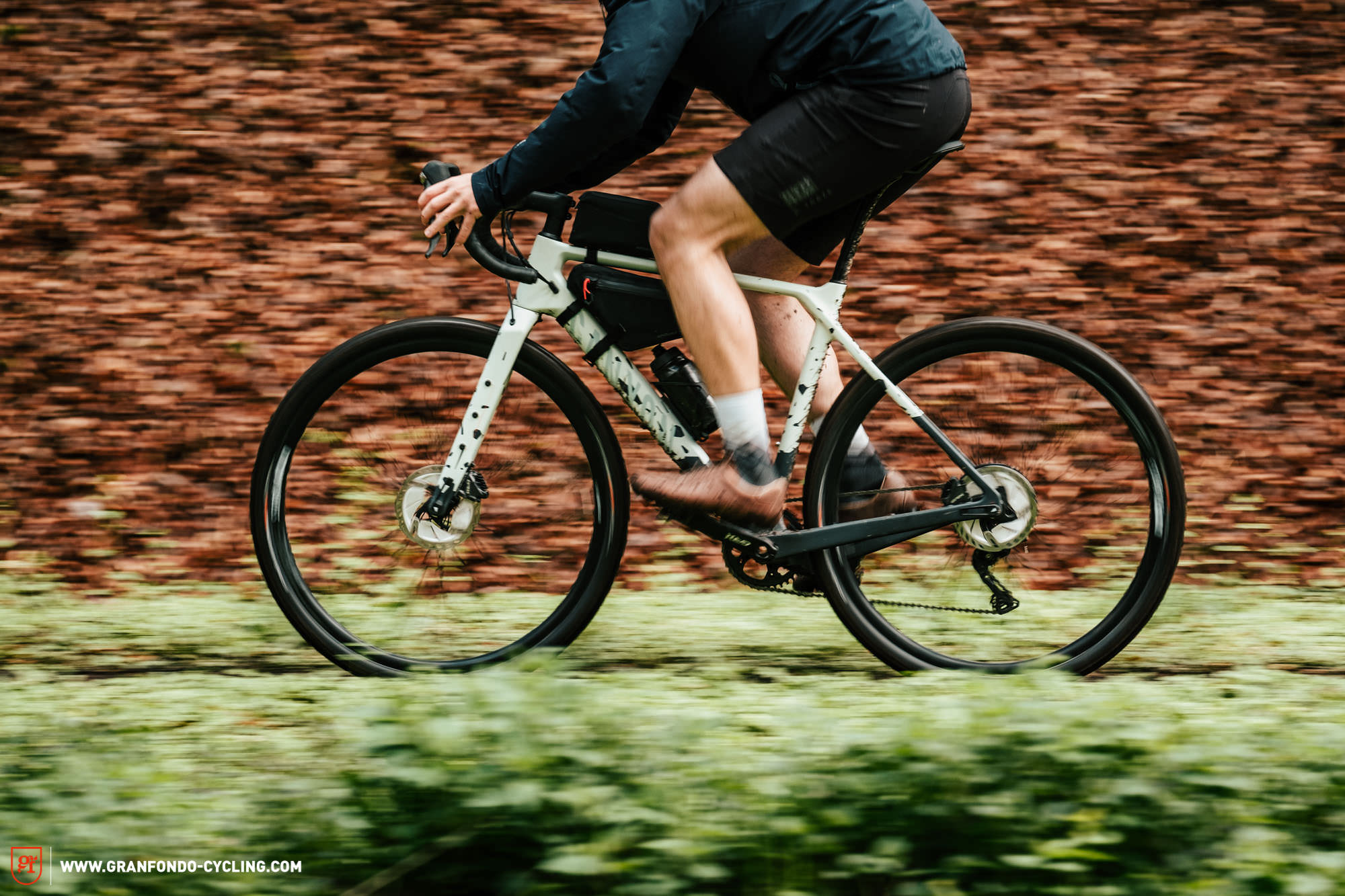
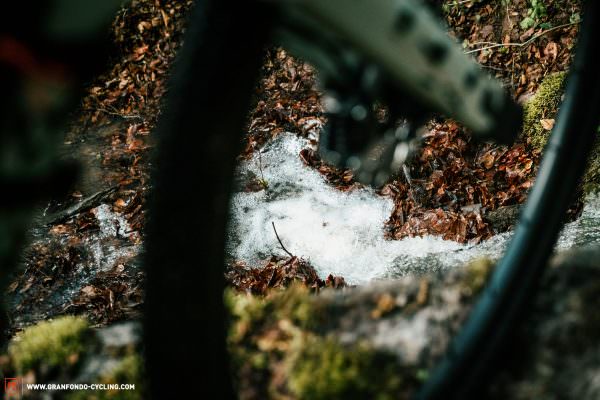
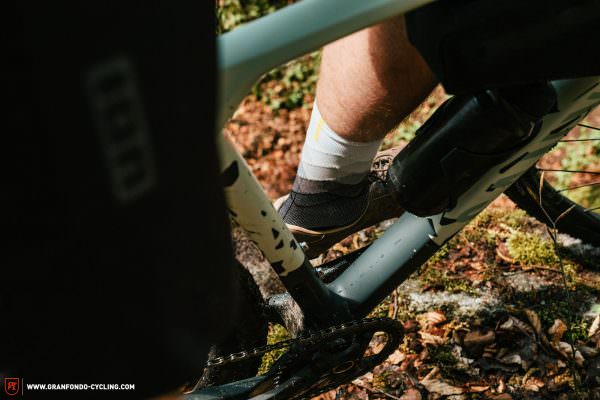
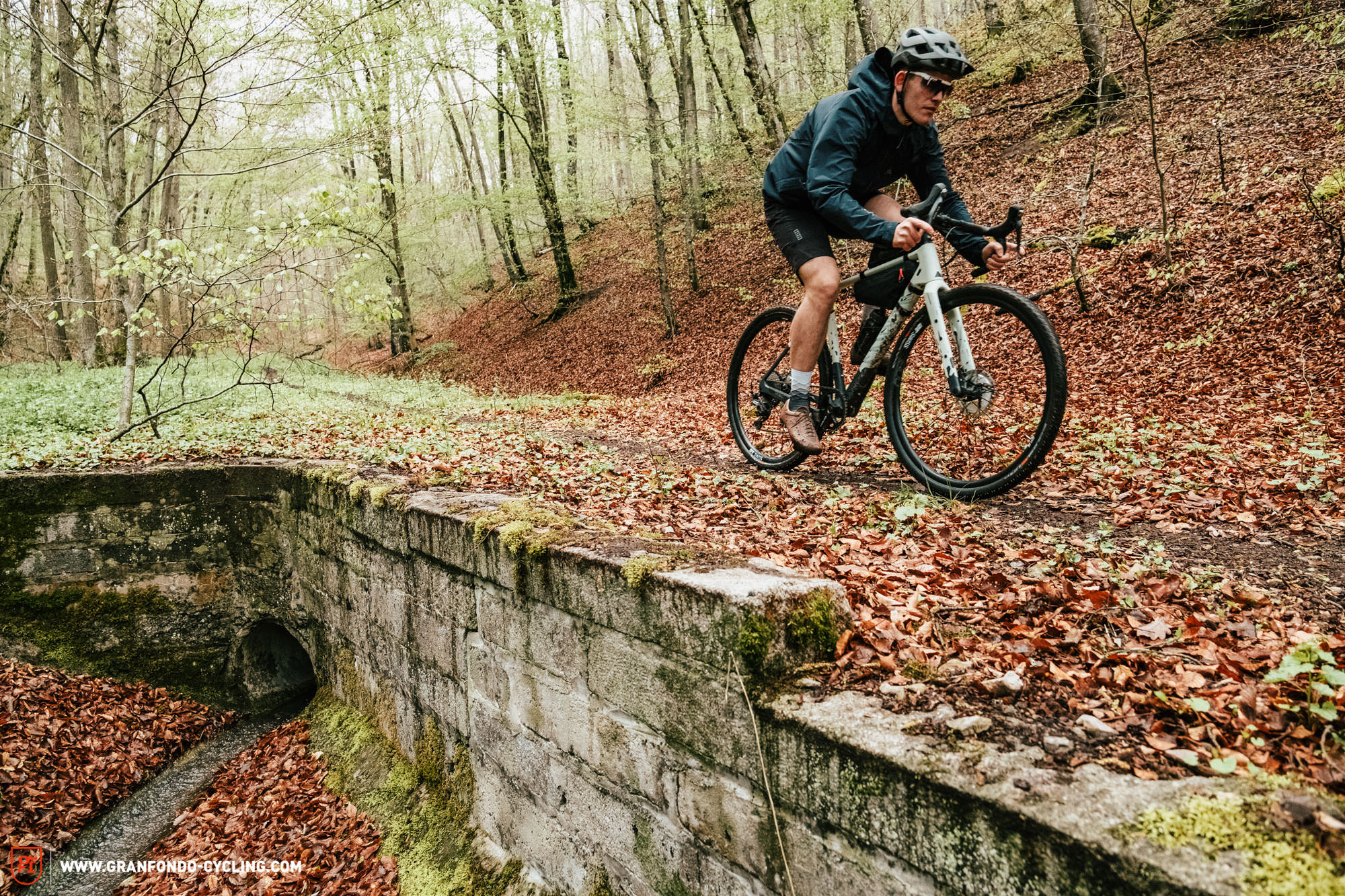
Grizlin’ is just like riding, but with your priorities set right. Experience over performance. Grizlin’ means rolling out the door with an open mind, not knowing quite what’s going to happen. – Canyon
The Canyon Grizl in detail
Even without the Canyon lettering on the carbon frame, there’s no mistaking the Grizl for any other brand as it shares many of the same design elements with its siblings. Particularly striking are the seat stays, which seem to run straight past the seat tube, forming a kink in the top tube. You’ll be familiar with this feature from the Ultimate, the Grail and, most pronounced, on the Canyon Inflite. The Grizl combines the look of a classic diamond shaped frame with the advantages of dropped seat stays. Otherwise, it relies on clear lines and dispenses with the visual wow-effects of the Grail with its unique cockpit, which we like.
The wow effects of this bike are less obtrusive, hidden in the frame and paintwork. Both the inside of the chainstays and the fork offer mounting options for the mudguards that Canyon developed in cooperation with Curana for the Grail:ON. They are available for 650B and 700C tires. However, they limit the maximum tire width to 45 mm. The chainstay is dropped on the drive side and made very narrow for added tire clearance. Speaking of tires: Canyon believe that bigger wheels are faster and roll better. As such, only the frame sizes 2XS and XS come fitted with 650B tires, to ensure balanced handling. The remaining sizes all come with 700C tires as standard. You’ll be able to fit up to 50 mm wide tires across the board. Attaching smaller 650B wheels to the larger frames doesn’t allow you to fit wider tires. The frame also features internal cable routing for a dropper post, underlining the Grizl’s intention to be used in rough terrain.
For bikepacking adventures, the Grizl offers additional mounting options on the top tube and on both sides of the fork. The bosses on fork legs are certified to carry up to 3 kg on either side. Canyon thought of bikepacking bags too, developing a range of bags especially for the Grizl in cooperation with Apidura. Included in the range is a 5-litre saddle bag, a frame bag and a top tube bag that gets bolted on.

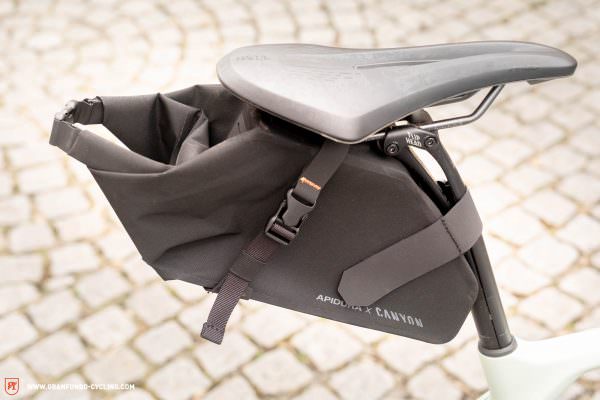

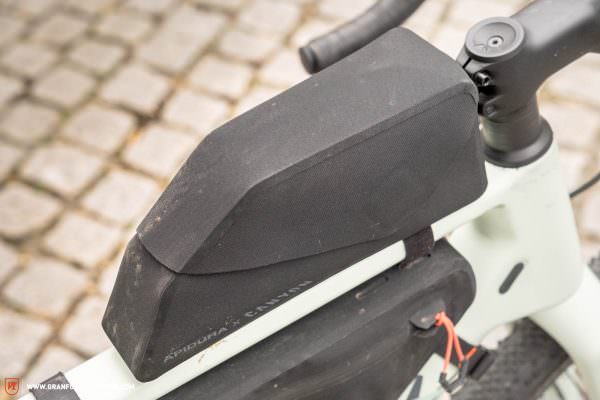
The SL models also have bosses for a third bottle cage under the down tube. This doesn’t apply to the SLX models as they have to make way for the Di2 battery. We particularly liked that Canyon indicate the recommended torque setting of the individual bosses with fine lettering on the frame. It also tells you which bolt you need for which hole in case you ever lose one of them – life can be so easy! The only thing we weren’t as pleased with are the externally routed cables at the cockpit. Though we don’t need internal cable routing on a gravel bike for aerodynamic reasons, it would make it so much easier to attach a handlebar bag for bikepacking trips.
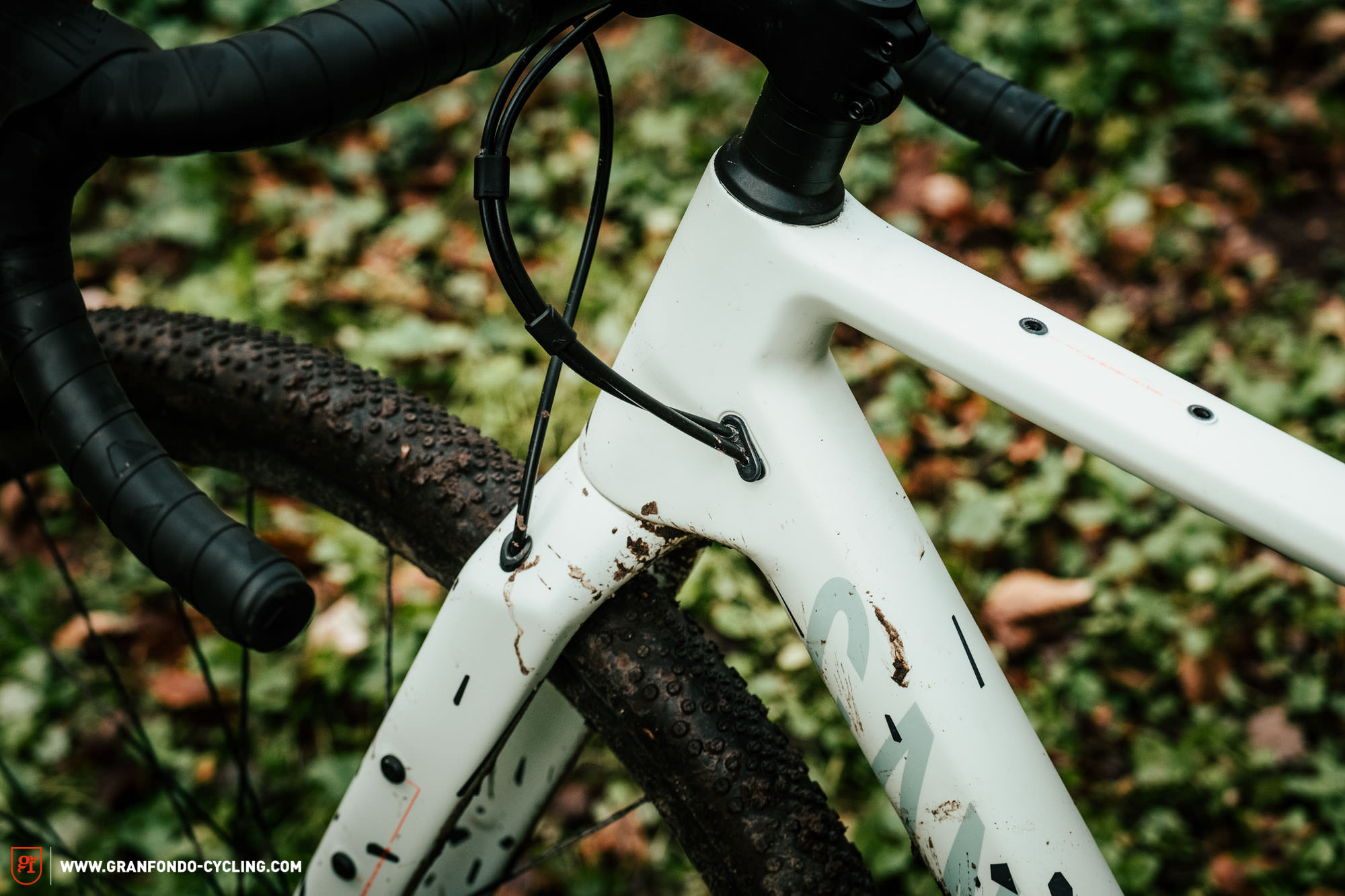
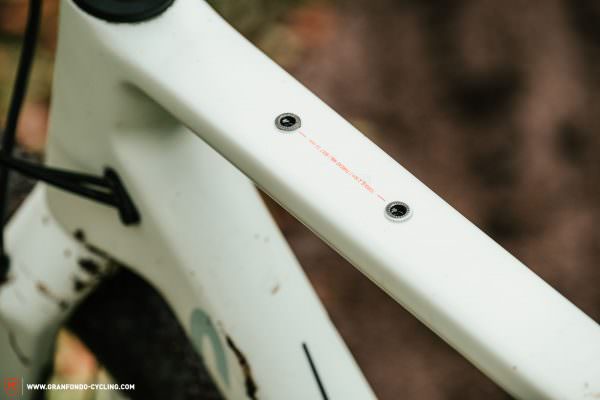
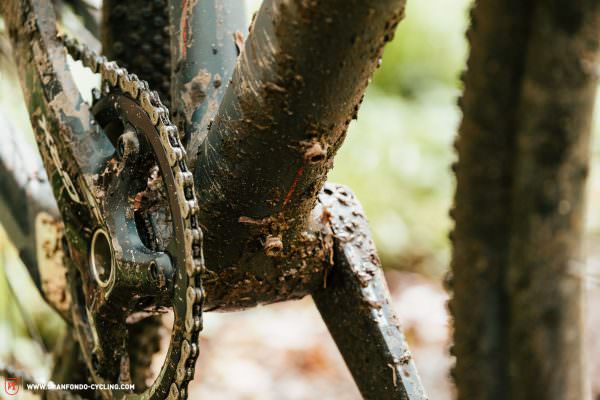
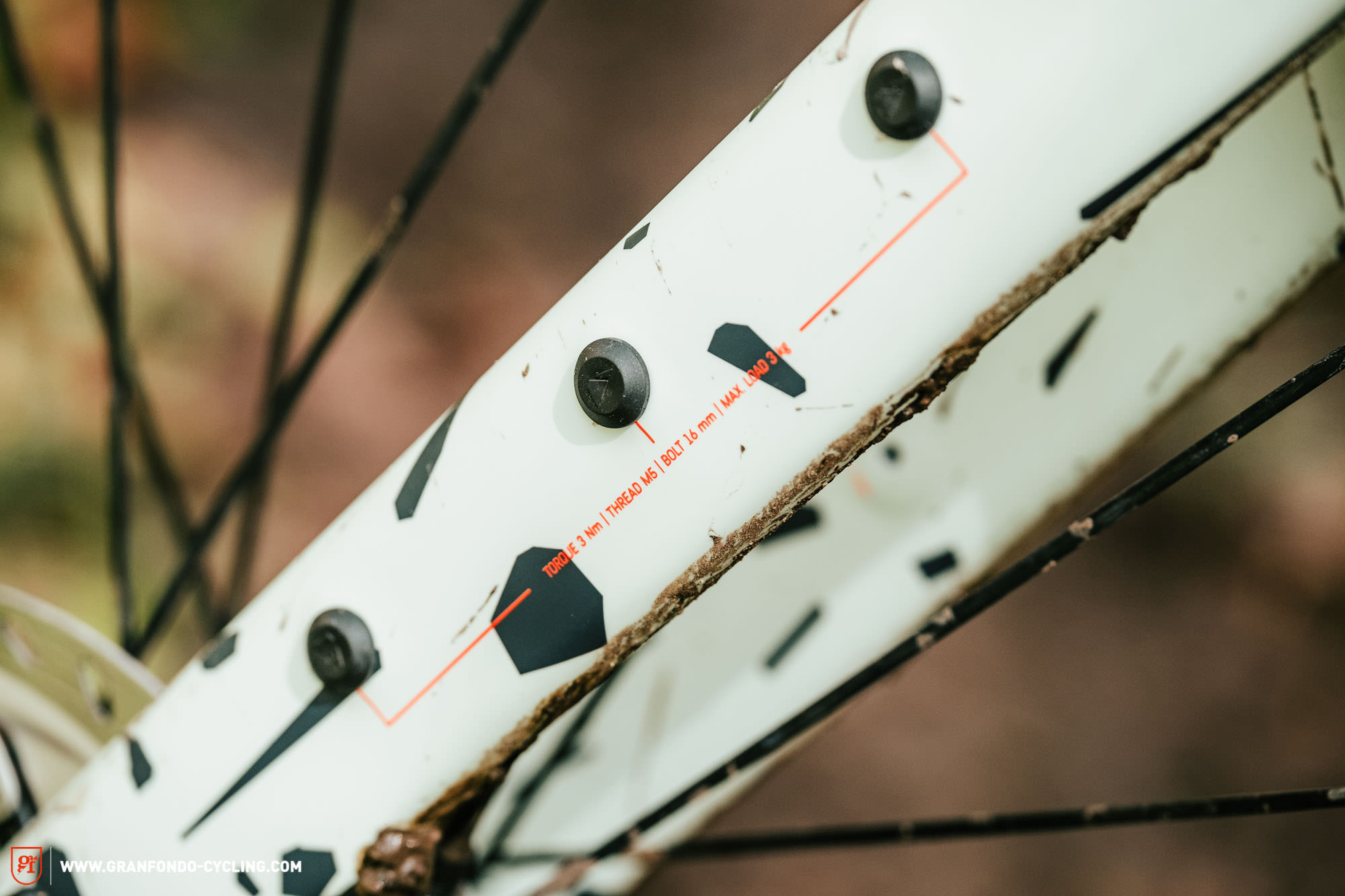
With a multitude of mounting points, eyelets for mudguards, stealth routing for a dropper post and the conventional stem-handlebar combination, the frame of the Grizl is probably the most versatile in Canyon’s portfolio. If you treat yourself to a second set of slightly more asphalt-oriented wheels, you will get a bike for almost any occasion.
The components of the Canyon Grizl
The Canyon Grizl is available in the SL and SLX variants, giving you a total of seven builds and five colours. The frames of the SLX models are lighter – the size M weighing 950 g instead of 1,050 g – and feature a stiffer construction at head tube and bottom bracket. Aluminium models are expected to be available by the autumn.
The Canyon Grizl CF SLX 8 1BY is the only model featuring Campagnolo components, relying on the EKAR 1×13 groupset. Along with the Shimano GRX 800 1×11 on the Grizl CF SL 8 1BY, they’re the only 1x options in the Grizl lineup. All other Grizl variants rely on the services of Shimano’s 2×11 GRX groupsets. Another noticeable feature is that mechanical groupsets dominate the build variants of the Grizl. This is particularly useful for long bikepacking trips away from civilization. If you prefer electronic shifting, then the Grizl CF SLX 8 Di2 is your bike! For the brakes, all models come with 160 mm rotors front and rear. If you want more braking power, the frame is compatible with up to 180 mm rotors.
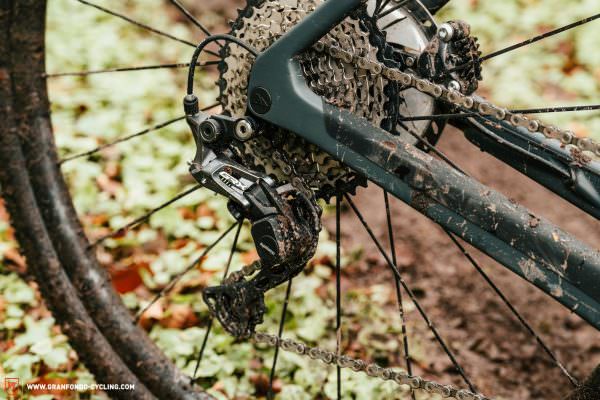
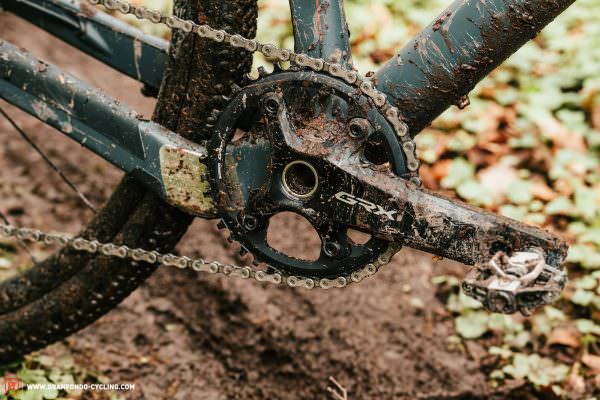
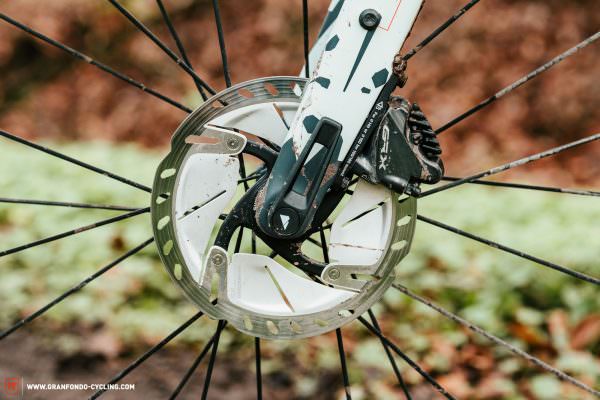
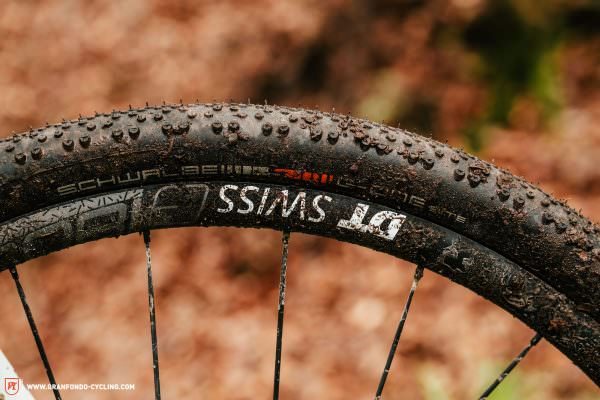
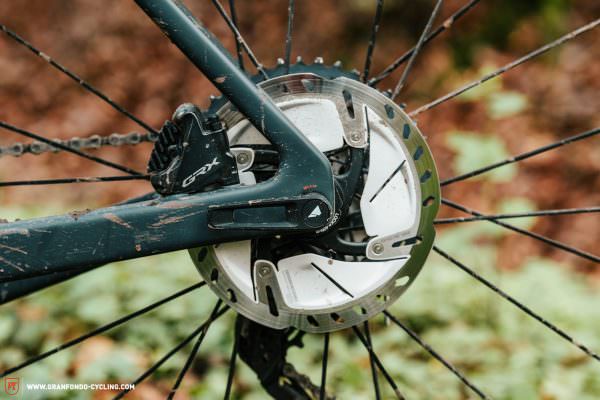
The two SLX models roll on DT Swiss GRC 1400 SPLINE DB 42 carbon wheels, while the more affordable SL models rely on aluminium. What they all have in common is a sizable internal rim width – 22 or 24 mm depending on the model – providing an ideal basis for voluminous gravel tires. All Grizl variants come fitted with 45 mm wide Schwalbe G-One Bite TLE Evo tires as standard, supplied with a tube although they’re tubeless-ready. The tires are wider than those on the Canyon Grail and should provide added traction and cushioning off-road. Your entry into the Grizl world starts with the Canyon Grizl CF SL 6, which weighs 9.8 kg in size M and costs € 1,999. The flagship model Canyon CF SLX 8 Di2 will cost you € 4,599 and weighs 8.7 kg in size M. For our review, we rode the size M Canyon Grizl CF SL 8 1BY, which weighs 9.1 kg and costs € 2,699. All build variants, prices, weights and colours can be found in the table below.
| Model | Grizl CF SL 6 | Grizl CF SL 7 | Grizl CF SL 7 WMN | Grizl CF SL 8 | Grizl CF SL 8 1BY | Grizl CF SLX 8 Di2 | Grizl CF SLX 8 1BY |
|---|---|---|---|---|---|---|---|
| Groupset | Shimano GRX 400 2 x 11 | Shimano GRX 600/810 2 x 11 | Shimano GRX 600/810 2 x 11 | Shimano GRX 800 2 x 11 | Shimano GRX 800 1 x 11 | Shimano GRX 815 2 x 11 | Campagnolo EKAR 1 x 13 |
| Ratio | 46/30 T x 11–34 T | 46/30 T x 11–34 T | 46/30 T x 11–34 T | 48/31 T x 11–34 T | 40 T x 11–42 T | 48/31 T x 11–34 T | 40 T x 10–44 T |
| Brakes | Shimano GRX 400 | Shimano GRX 600 | Shimano GRX 600 | Shimano GRX 800 | Shimano GRX 800 | Shimano GRX 815 | Campagnolo EKAR |
| Wheels | DT Swiss C 1850 SPLINE DB 23 | DT Swiss C 1850 SPLINE DB 23 | DT Swiss C 1850 SPLINE DB 23 | DT Swiss G 1800 SPLINE DB 25 | DT Swiss G 1800 SPLINE DB 25 | DT Swiss GRC 1400 SPLINE DB 42 | DT Swiss GRC 1400 SPLINE DB 42 |
| Internal width | 22 mm | 22 mm | 22 mm | 24 mm | 24 mm | 24 mm | 24 mm |
| Tires | Schwalbe G-One Bite TLE Evo | Schwalbe G-One Bite TLE Evo | Schwalbe G-One Bite TLE Evo | Schwalbe G-One Bite TLE Evo | Schwalbe G-One Bite TLE Evo | Schwalbe G-One Bite TLE Evo | Schwalbe G-One Bite TLE Evo |
| Seat post | Canyon SP57 VCLS | Canyon SP57 VCLS | Canyon SP57 VCLS | Canyon S15 VCLS 2.0 | Canyon S15 VCLS 2.0 | Canyon S15 VCLS 2.0 | Canyon S15 VCLS 2.0 |
| Saddle | Selle Italia Model X | Selle Italia Model X | Selle Italia X3 XP Lady Boost SF | Fizik Argo Terra R5 | Fizik Argo Terra R5 | Fizik Argo Terra R5 | Fizik Argo Terra R5 |
| Colours | Earl Grey, Olive Sky | Earl Grey, Olive Sky | Wildberry Splatter | Earl Grey, Matcha Splash | Earl Grey, Matcha Splash | Kale Smash | Kale Smash |
| Weight (size M) | 9.8 kg | 9.5 kg | 9.5 kg | 9.3 kg | 9.1 kg | 8.7 kg | 8.6 kg |
| Price | € 1,999 | € 2,299 | € 2,299 | € 2,799 | € 2,699 | € 4,599 | € 4,499 |
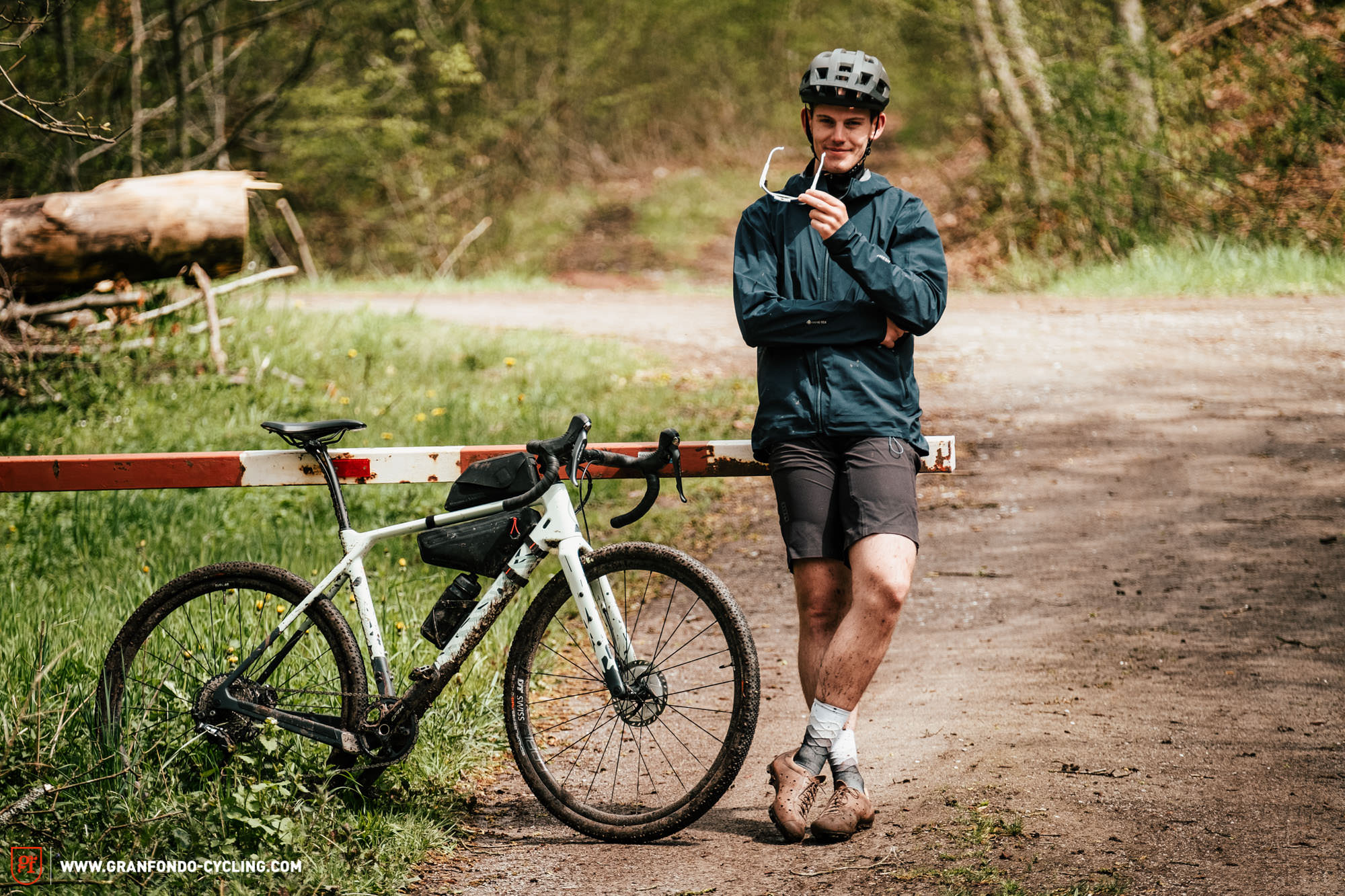
The geometry of the Canyon Grizl
Canyon, this is to create clearance for the high-volume tires of the Grizl and make it more stable. To keep the handling responsive, Canyon rely on a short 80 mm V13 stem for the Grizl. The stack and reach figures of the Grizl are also identical to those of the Grail, while the ratio of stack to reach is between that of the Canyon Ultimate and Endurace. This results in a riding position that is more relaxed than on the Ultimate but a little more aggressive than on the Endurace. The geometry should make the bike’s handling good-natured in technical terrain without feeling sluggish on asphalt.
The Canyon HB50 handlebar of the Grizl is 440 mm wide with an 8-degree flare in the drops. You might want a wider model to accommodate a large handlebar bag or more flare for increased control in rough terrain. Fortunately, since the Grizl relies on a conventional stem and handlebar combination instead of an integrated cockpit like the Grail CF, you can easily upgrade the handlebar to suit your preferences. Our test rider is 184 cm tall and felt comfortable aboard the size M, putting him right in the middle of the available frame sizes. This serves to illustrate that Canyon accommodate a wide range of rider sizes, from short to tall. See the table below for all the geometry data.
| Size | 2XS | XS | S | M | L | XL | 2XL |
|---|---|---|---|---|---|---|---|
| Seat tube | 432 mm | 462 mm | 492 mm | 522 mm | 552 mm | 582 mm | 612 mm |
| Top tube | 532 mm | 541 mm | 562 mm | 574 mm | 588 mm | 612 mm | 627 mm |
| Head tube | 121 mm | 133 mm | 118 mm | 138 mm | 164 mm | 185 mm | 204 mm |
| Head angle | 70° | 71° | 71° | 72.25° | 72.5° | 72.75° | 72.75° |
| Seat angle | 73.5° | 73.5° | 73.5° | 73.5° | 73.5° | 73.5° | 73.5° |
| Chain stay | 420 mm | 420 mm | 435 mm | 435 mm | 435 mm | 435 mm | 435 mm |
| Wheelbase | 1,007 mm | 1,007 mm | 1,036 mm | 1,037 mm | 1,050 mm | 1,072 mm | 1,086 mm |
| Reach | 377 mm | 382 mm | 397 mm | 402 mm | 409 mm | 427 mm | 436 mm |
| Stack | 522 mm | 537 mm | 556 mm | 579 mm | 605 mm | 626 mm | 644 mm |
| Stem | 70 mm | 70 mm | 70 mm | 80 mm | 90 mm | 90 mm | 100 mm |
| Bar | 400 mm | 400 mm | 420 mm | 440 mm | 440 mm | 460 mm | 460 mm |
| Crank | 170 mm | 170 mm | 172.5 mm | 172.5 mm | 172.5 mm | 175 mm | 175 mm |
| Wheel size | 650B | 650B | 700C | 700C | 700C | 700C | 700C |
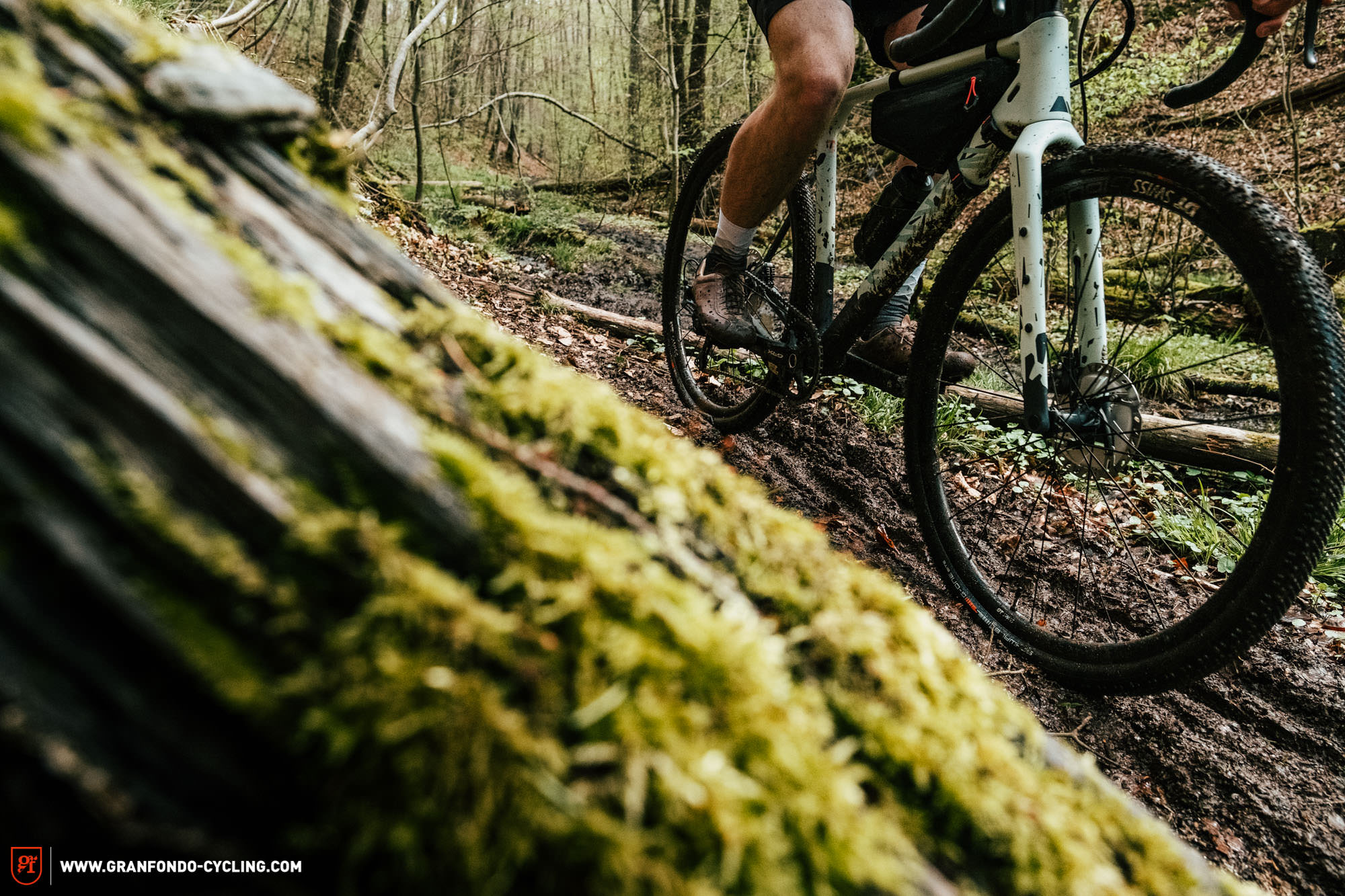

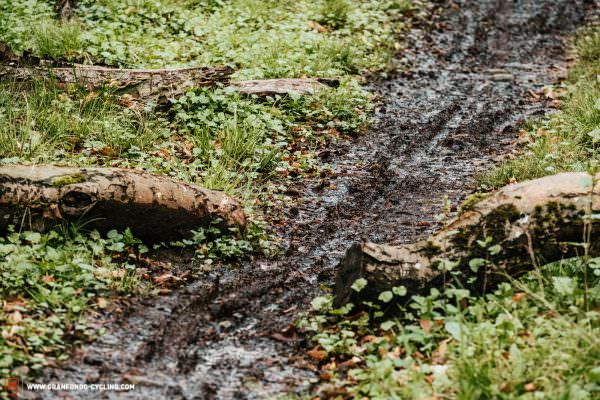
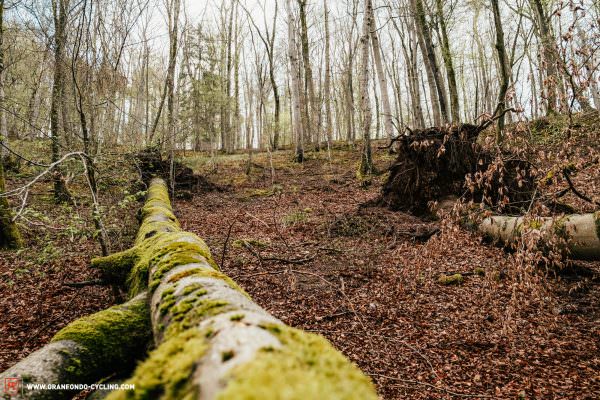
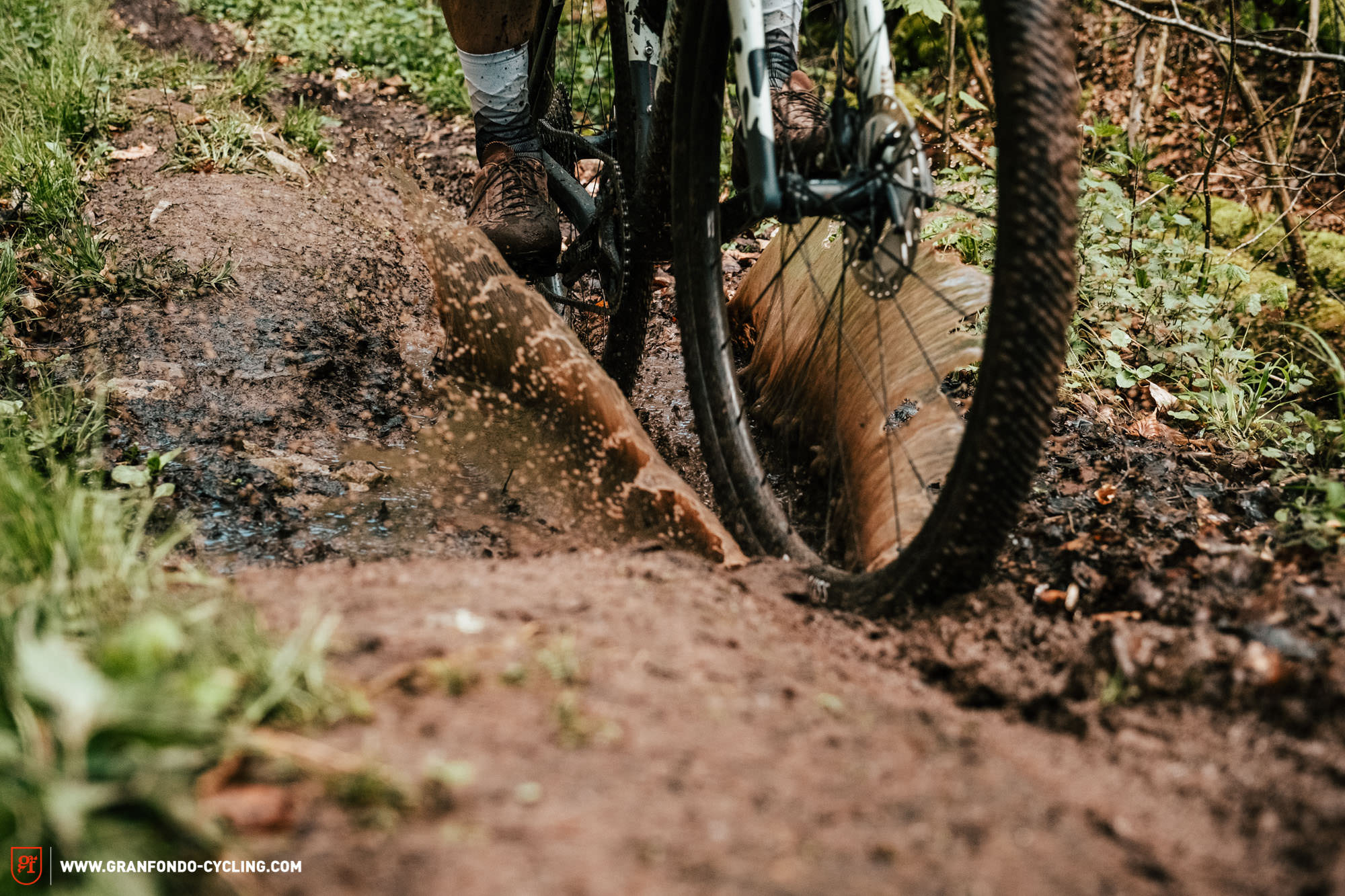
The Canyon Grizl CF SL 8 1BY in review!
The Canyon Grizl takes time to blossom. This is due to the fact that a gravel ride usually starts at your doorstep and, unfortunately, that generally means starting on asphalt where the Grizl prefers a leisurely pace. Don’t be in a hurry and take your time to enjoy the balanced, composed and relaxed handling instead as you make your way to the nearest dirt road. With the 45 mm wide Schwalbe tires and the Canyon S15 VCLS 2.0 seat post, the bike reliably absorbs vibrations as well as bigger bumps. The bike’s compliance is evenly distributed between the front and rear and the Grizl is far from its limits. The handling is pleasantly responsive, though obviously not on the level of purebred road bike. To blame are the high-volume tires, which also slow down the bike’s acceleration to some degree and make for increased rolling resistance. However, they offer a sufficiently fast setup and plenty of off-road reserves for those who aren’t planning to beat their personal best on asphalt roads.
As soon as you touch down on some dirt, the Grizl reveals its best side. The more demanding the terrain, the more comfortable the bike feels. It rolls along wide dirt roads like a steam train as the tires work very well in this kind of terrain, offering a lot of traction when accelerating and plenty of grip through corners. The limits of the Grizl are determined by the rider rather than the bike itself. Experienced gravel riders or mountain bikers will also enjoy riding the bike in moderately rough terrain, in deep mud or over small jumps. It goes without saying that it will reach its limits in terms of comfort here. Since the bike features no active suspension, it is less forgiving than a mountain bike, which makes picking your line all the more important. But, if you know what you’re doing, you’ll have a lot of fun in rough terrain!
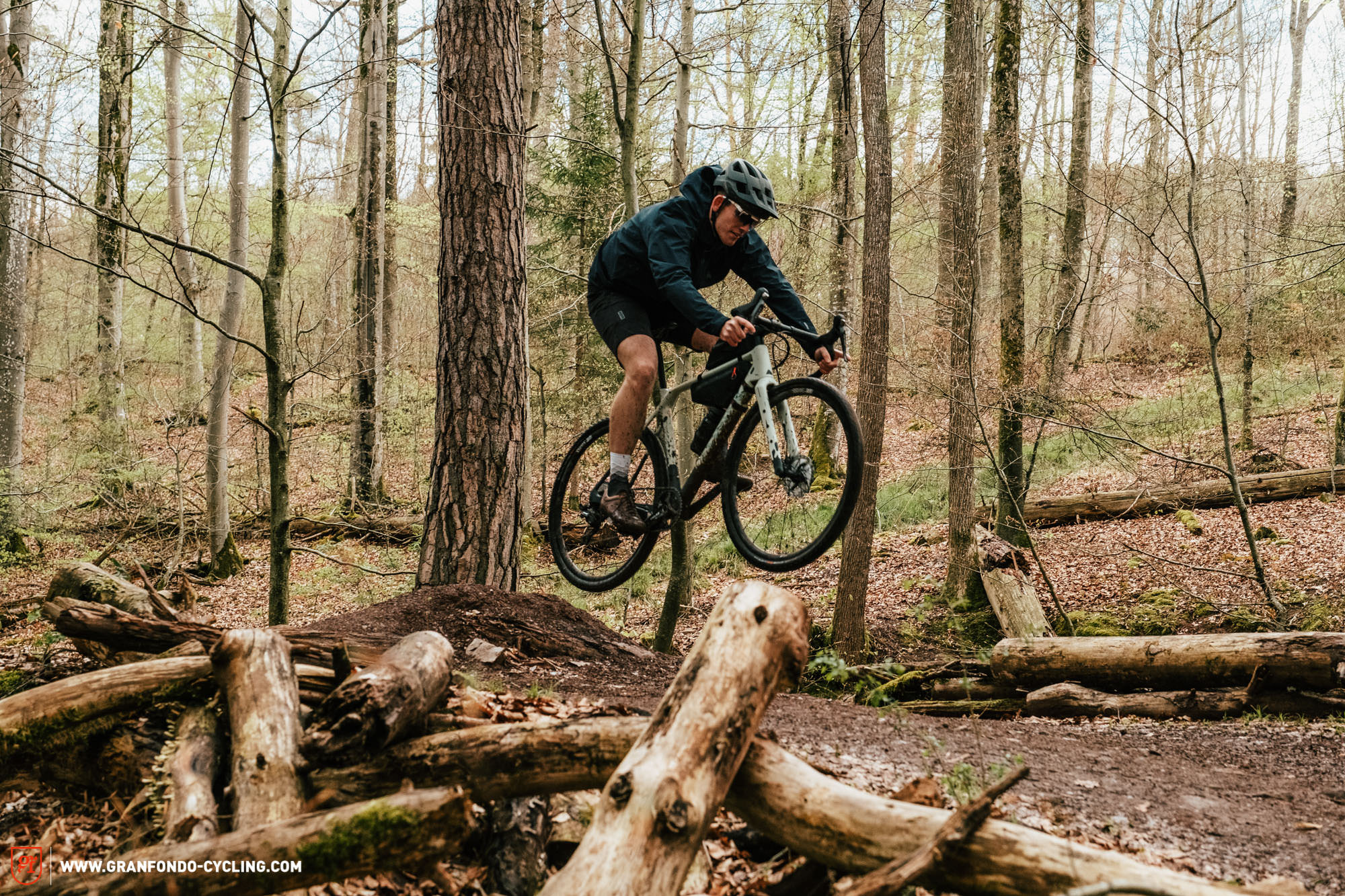
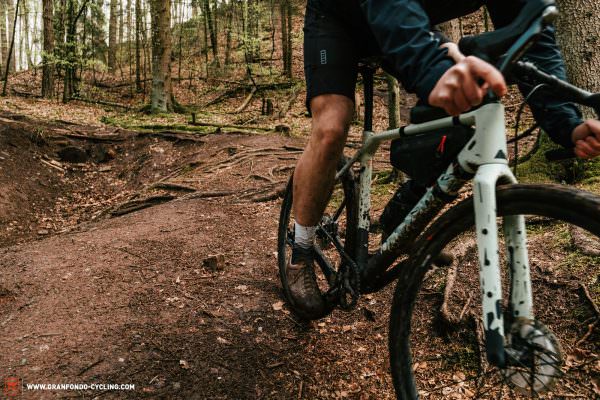
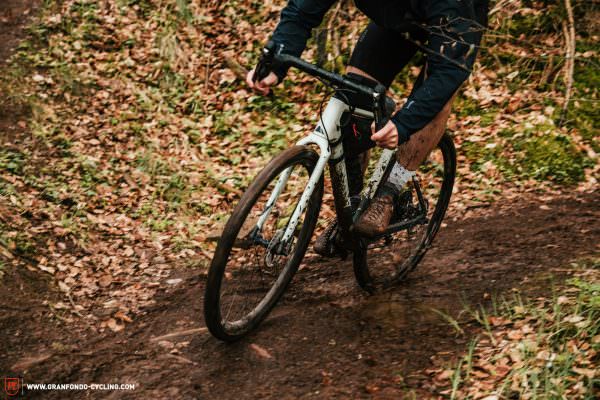
For beginners, connoisseurs and all those who have felt left out, the handling of the Grizl is balanced and intuitive, offering plenty of stability and control! When accelerating on gravel, the bike feels light-footed and once up to speed, it does a good job of carrying its momentum on long gravel motorways. The Grizl’s all-round capabilities outshine all of Canyon’s other gravel bikes and we’re confidence that it will become a firm favourite with its balanced and stable handling.
The gear range is wide enough for fast rides along gravel roads and trails. It is only on steep inclines with heavy luggage that we missed having an emergency climbing ring. The Shimano GRX groupset is the perfect choice for the Canyon Grizl. It shifts quickly and precisely and is robust enough to deal with dirt and grime. The 160 mm rotors provide all the braking power you need to always stay in control, even on fast downhill trails. In addition to the very predictable and intuitive to handling, this contributes to the high level of confidence you’ll feel aboard the Grizl. With the Grizl, it’s no wonder that you’ll prefer playing in the woods all day than hitting the asphalt to make your way back home. We’re convinced that you’ll have the most fun with the Canyon Grizl there where no one would ever think of taking a road bike. If gravel were a music genre, the Grizl would be a punk rocker!
Is the Canyon Grizl the right bike for you?
Have you already completed our interactive gravel buyers’ guide? If not, we recommend doing so right now to find out whether the Canyon Grizl is the right gravel bike for you. You can find it here! So, you’re an MTB gravel hero? Then the Canyon Grizl is exactly your thing. Regardless of whether you’ve got your roots in the mountain bike sector and are looking for a fast alternative for less technical terrain or a roadie looking for maximum speed on flow trails, the Grizl is the right tool for you. If you’re a globetrotter, you will also find a good companion for long bikepacking trips in the Grizl, with plenty of places to mount your luggage. What about the gravel all-rounders? With the Canyon Grizl, they too will find a very versatile companion that always offers enough reserves thanks to the balanced handling.
Conclusion
With the Canyon Grizl, the German brand have finally made the gravel all-rounder that we’ve been waiting for, and we think it will soon trump the Grail CF in popularity. If you enjoy a leisurely pace when riding on asphalt, you will get a bike with intuitive handling, good components and lots of potential for customisation at a fair price. While gravel racers should go for the sportier Grail CF, the Grizl is the perfect gravel bike for connoisseurs, explorers, globetrotters and MTB heroes.
Tops
- off-road capability
- generous tire clearance up to 700 x 50C
- lightweight
- numerous mounting points
Flops
- limited on-road performance
- minimal flare on the handlebars
For more information, visit canyon.com
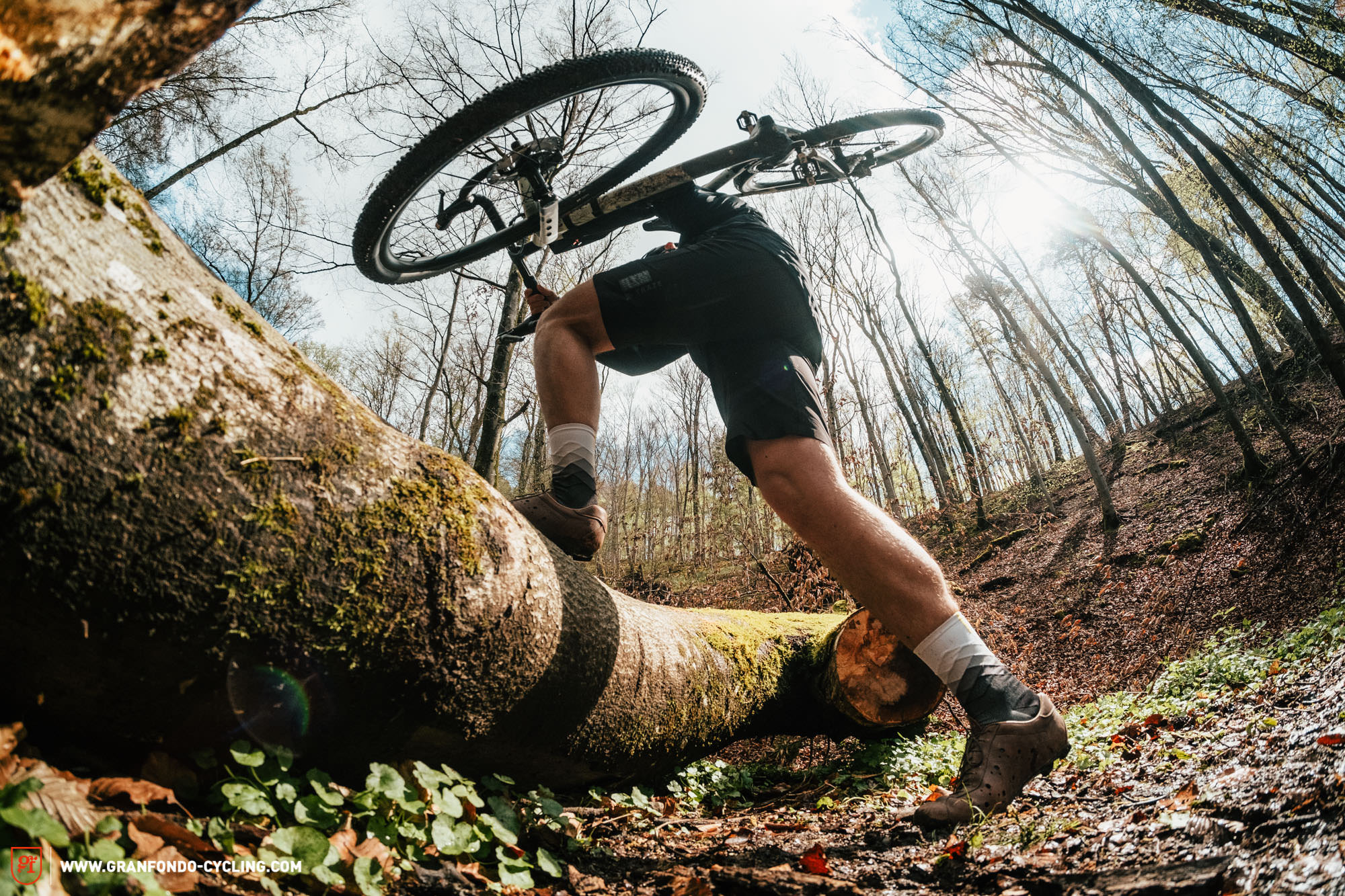
Did you enjoy this article? If so, we would be stoked if you decide to support us with a monthly contribution. By becoming a supporter of GRAN FONDO, you will help secure a sustainable future for high-quality cycling journalism. Click here to learn more.
Words: Photos: Valentin Rühl & Tobias Hörsch


